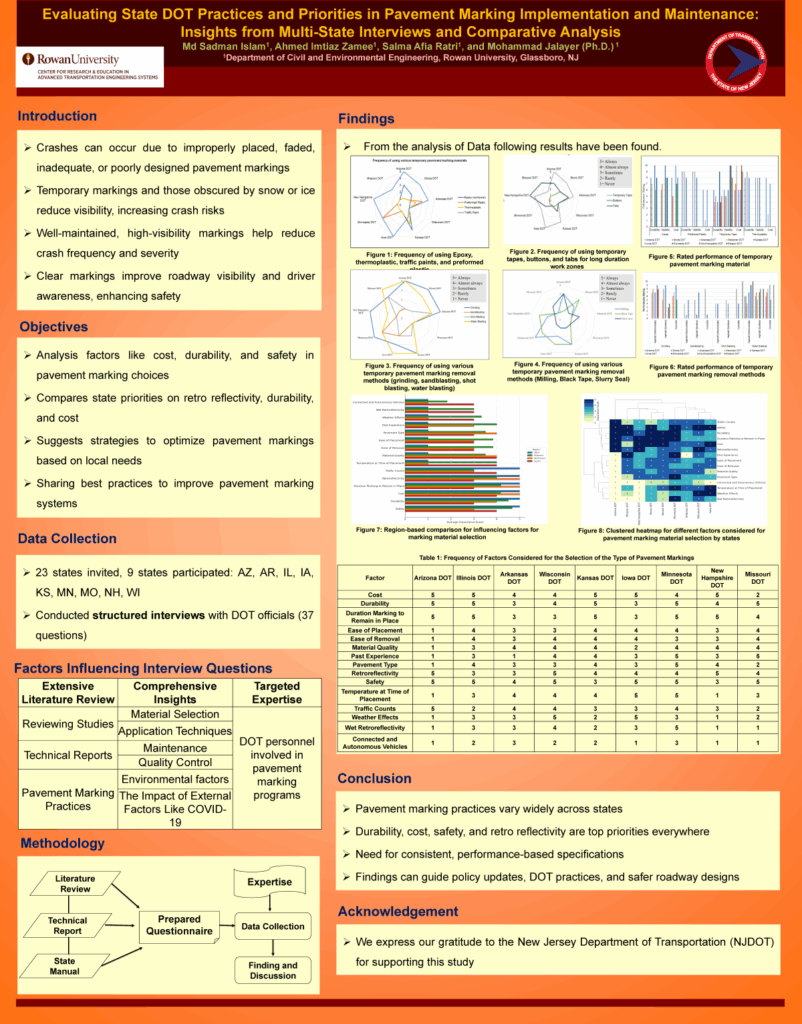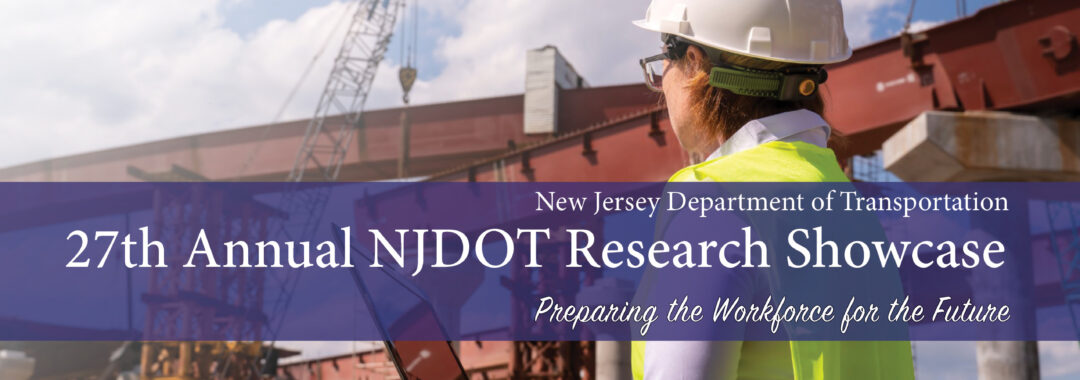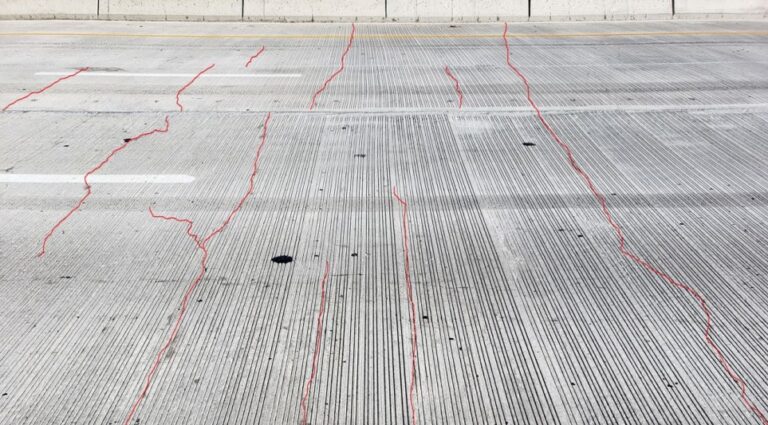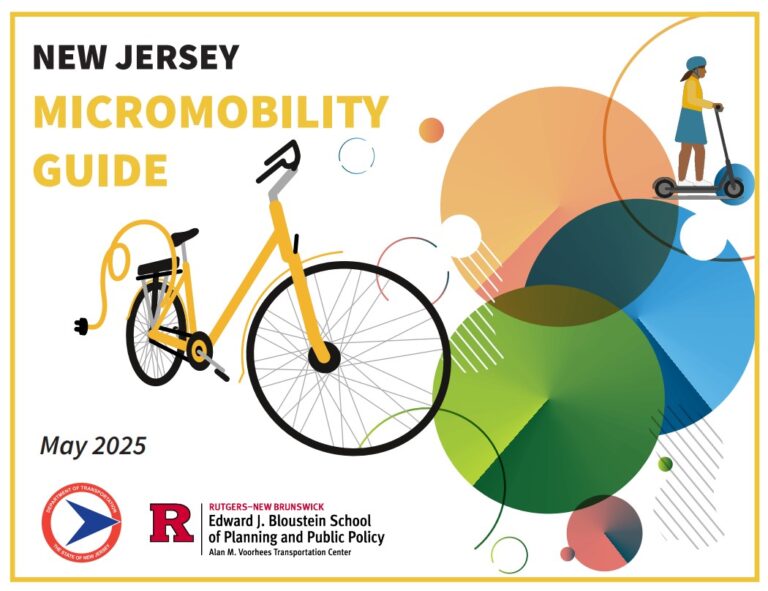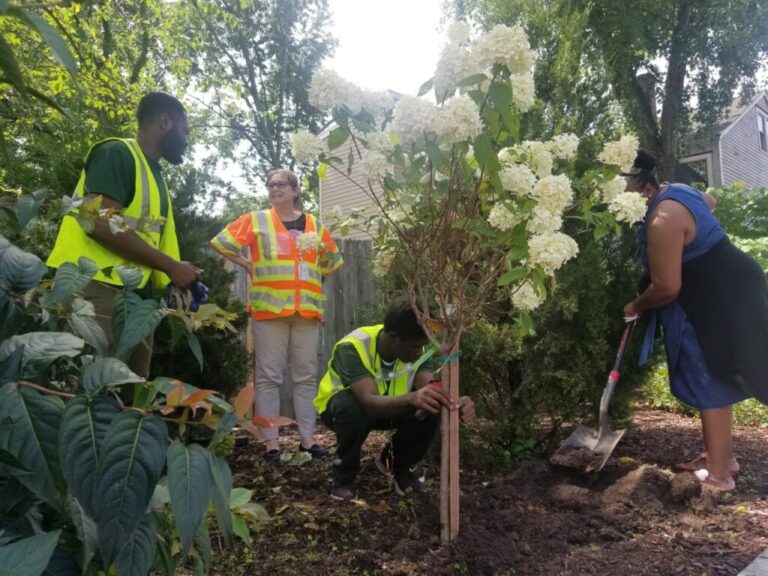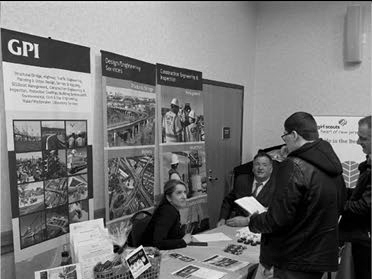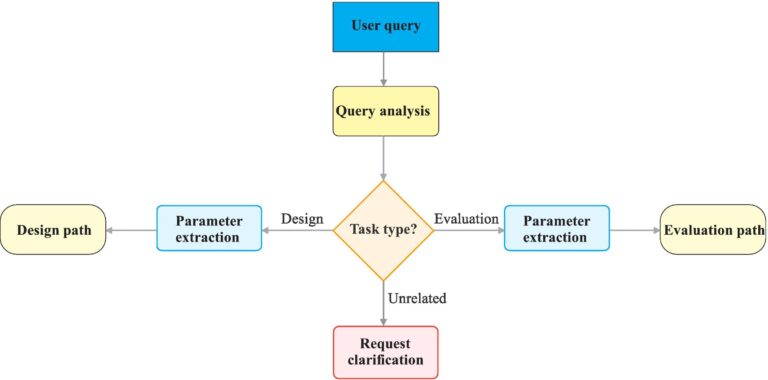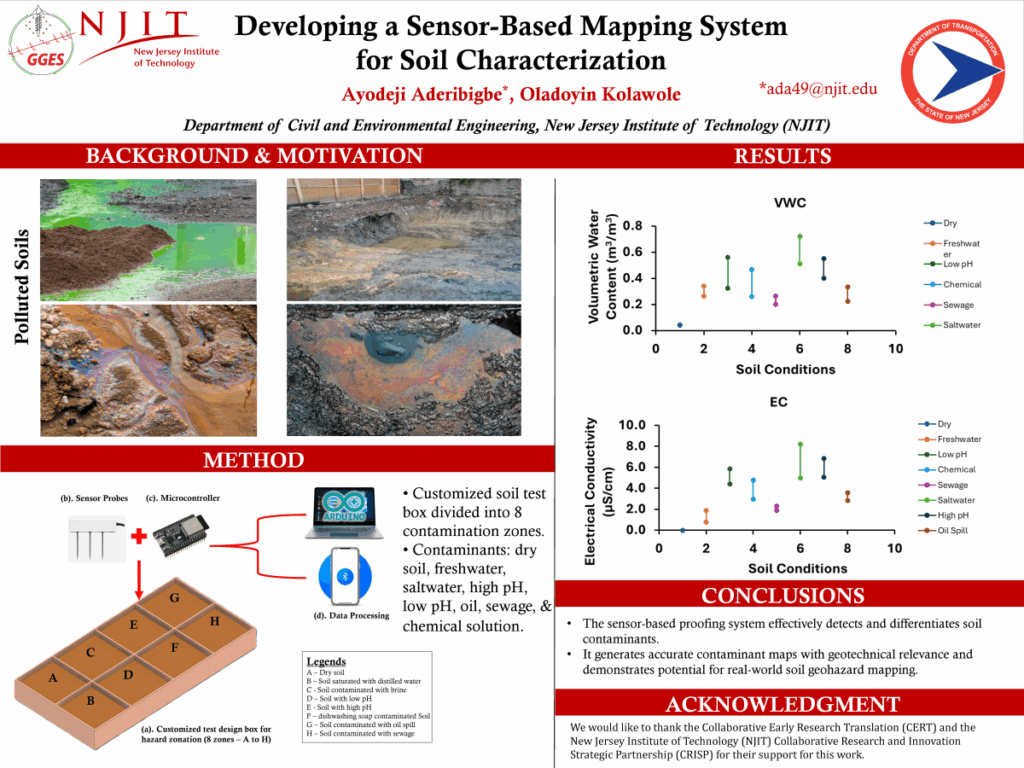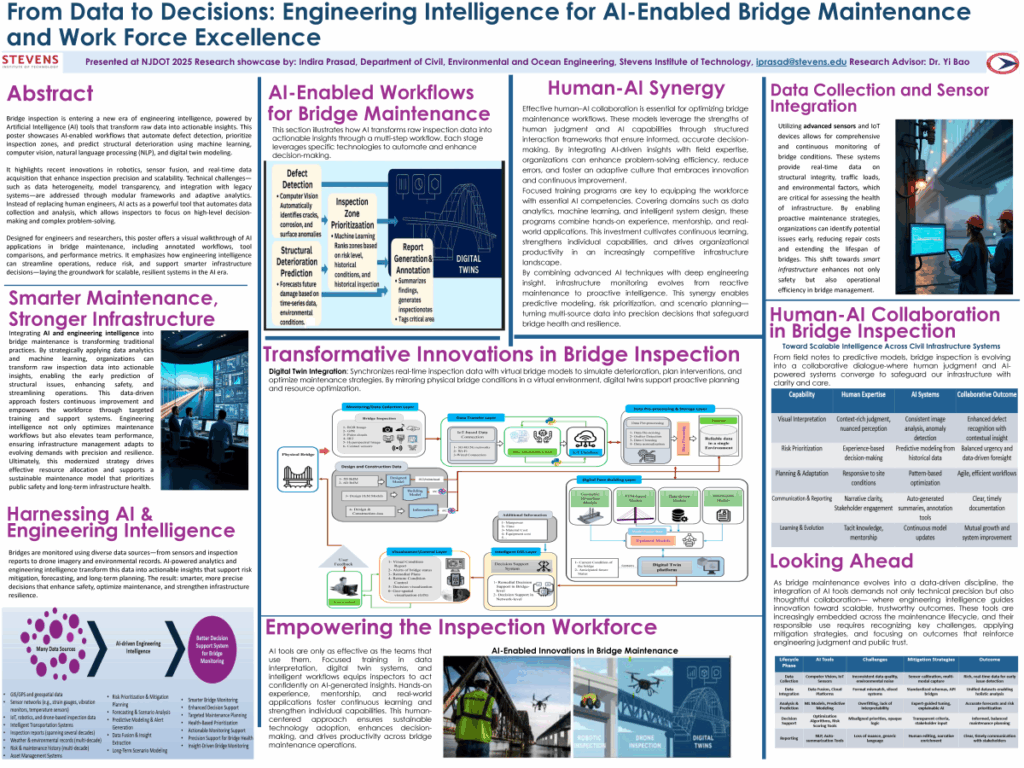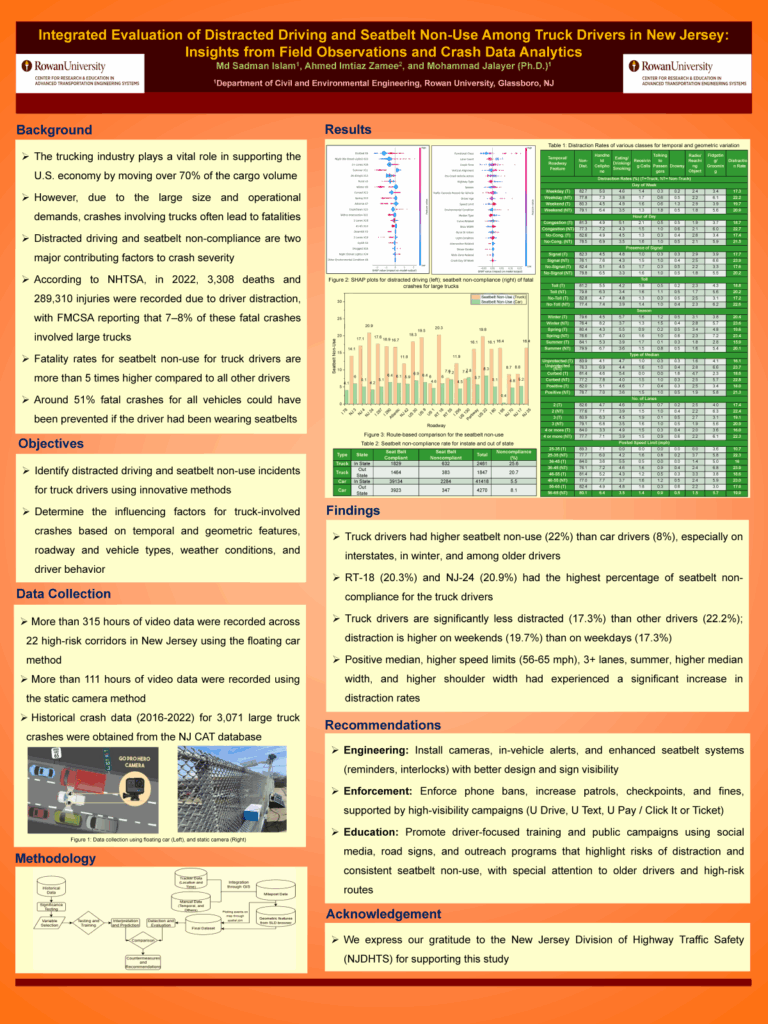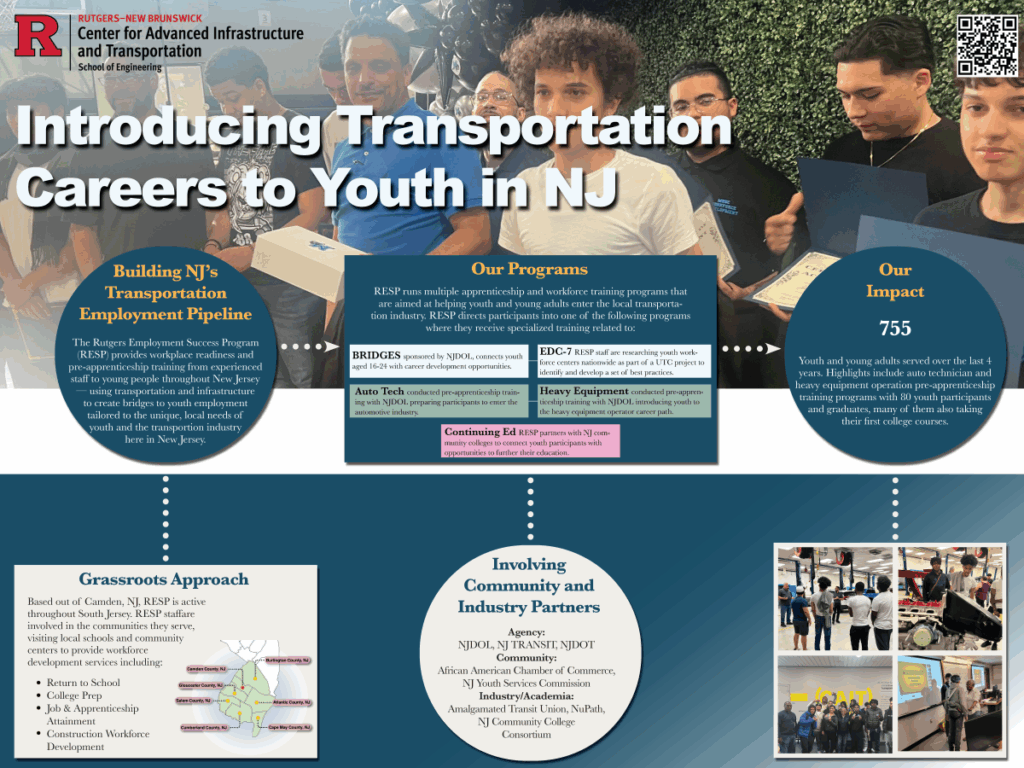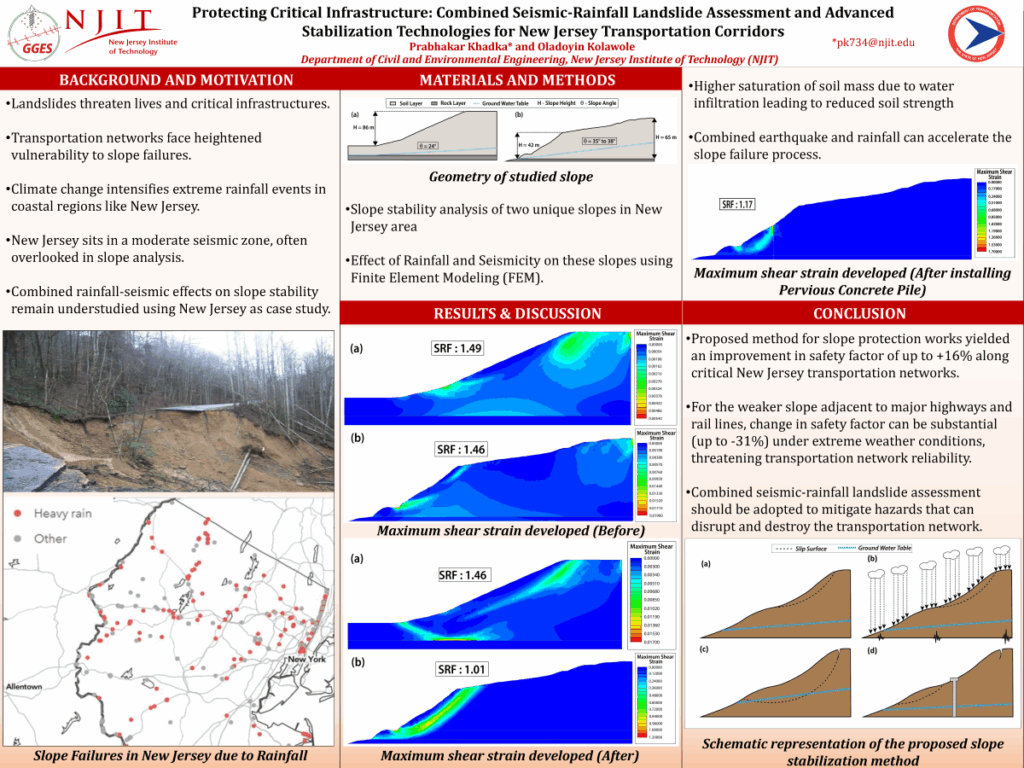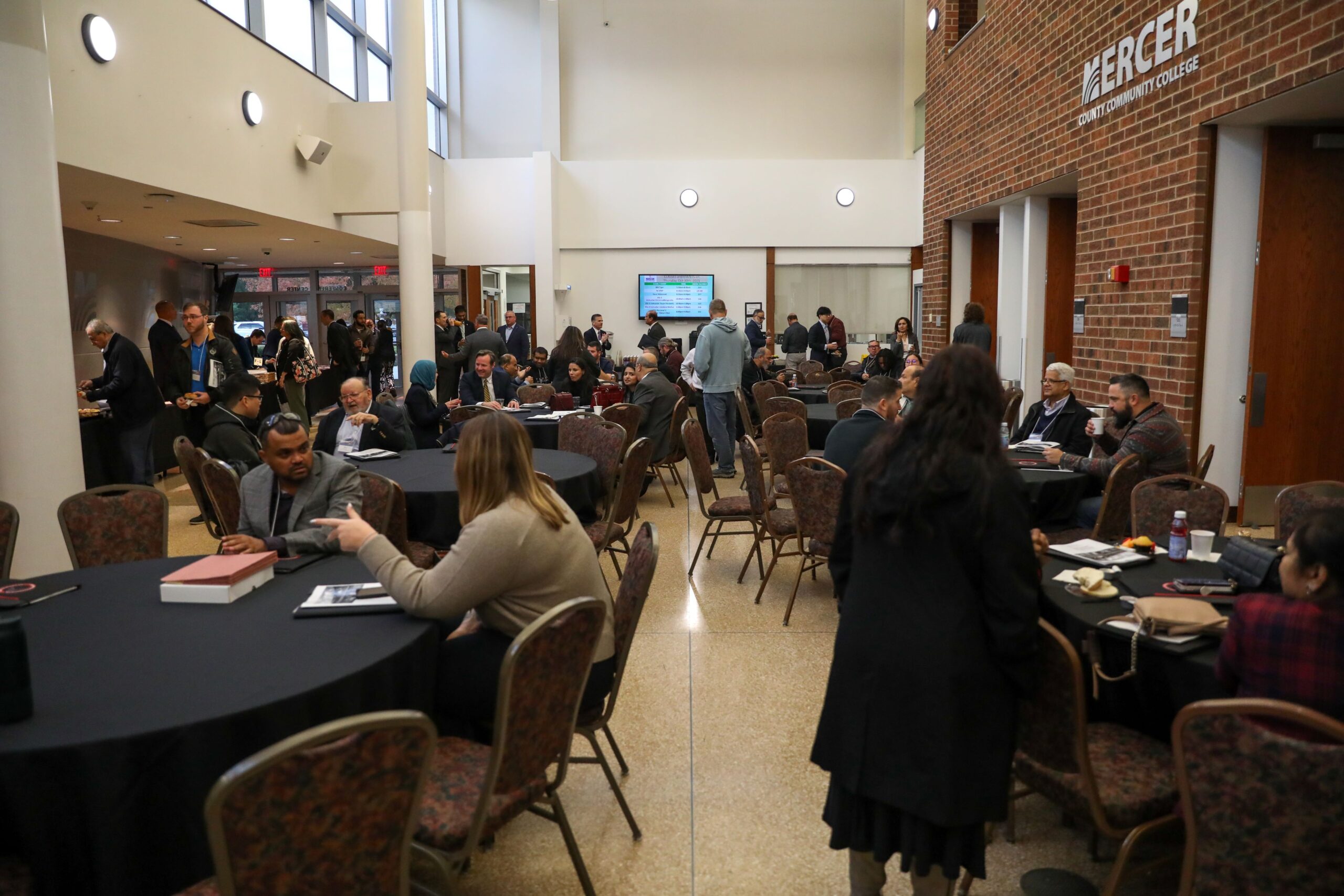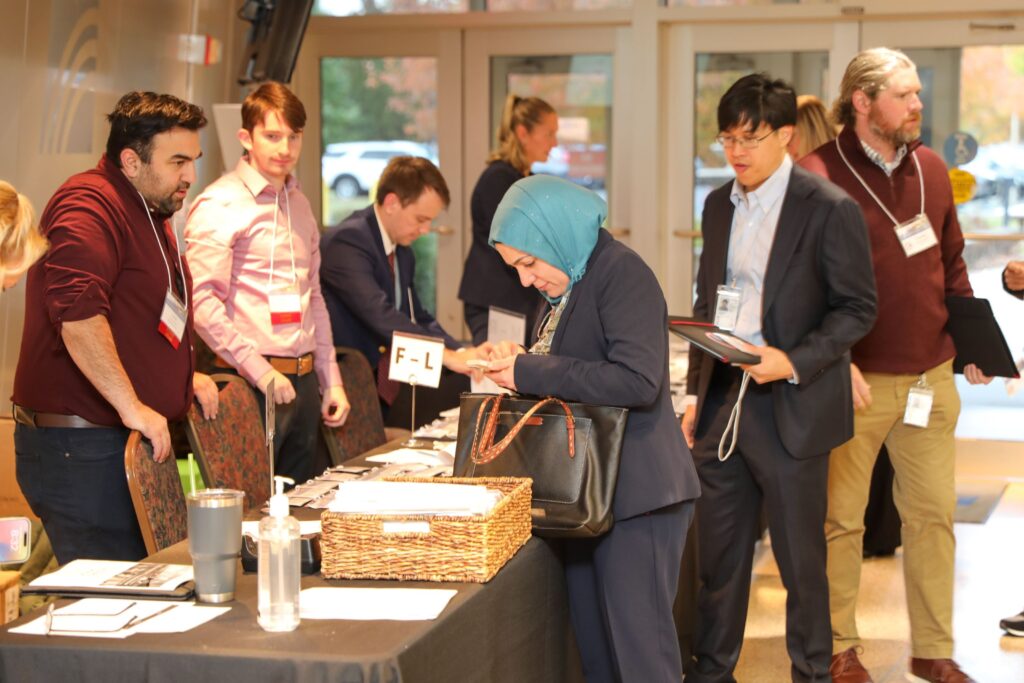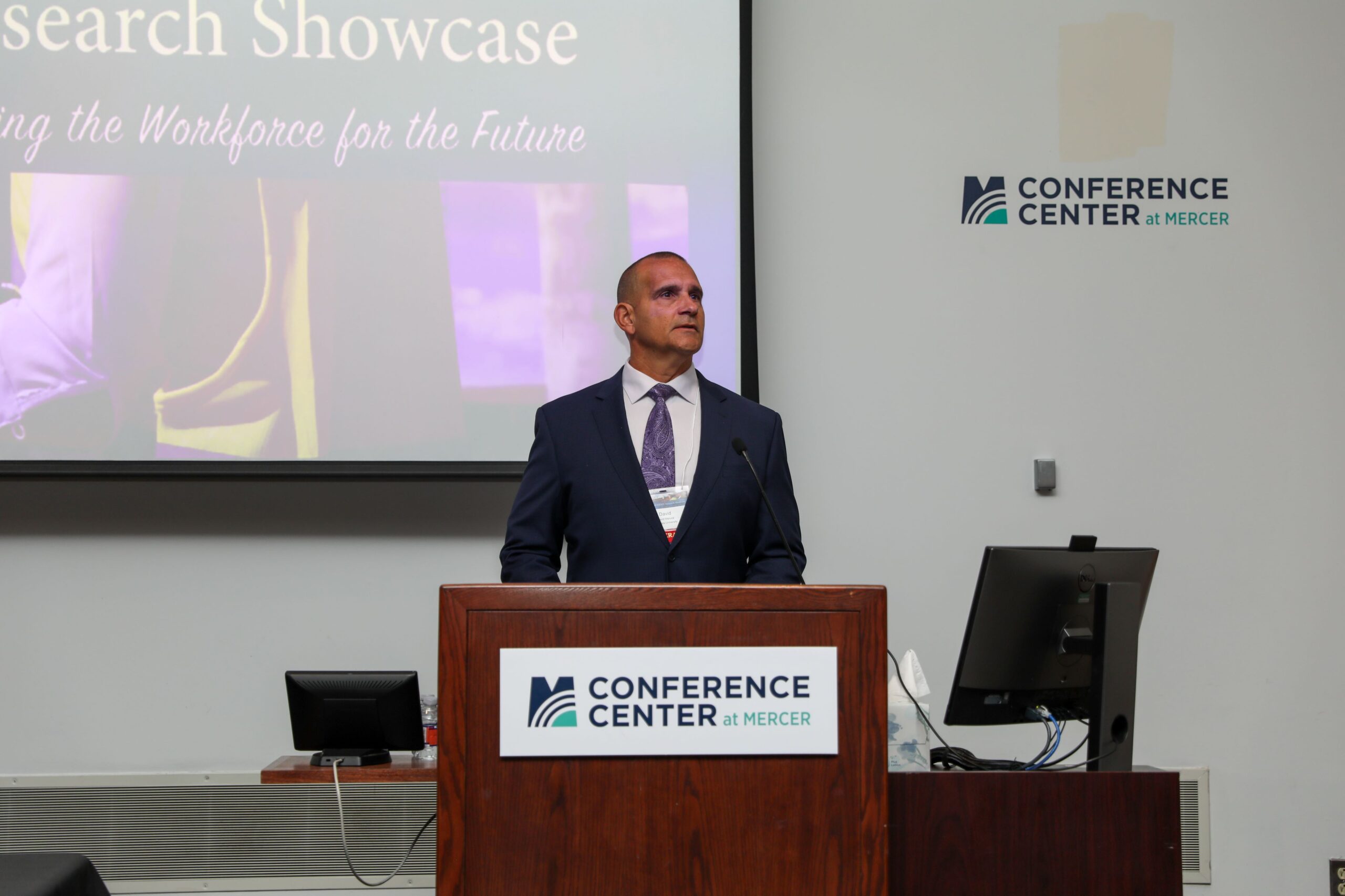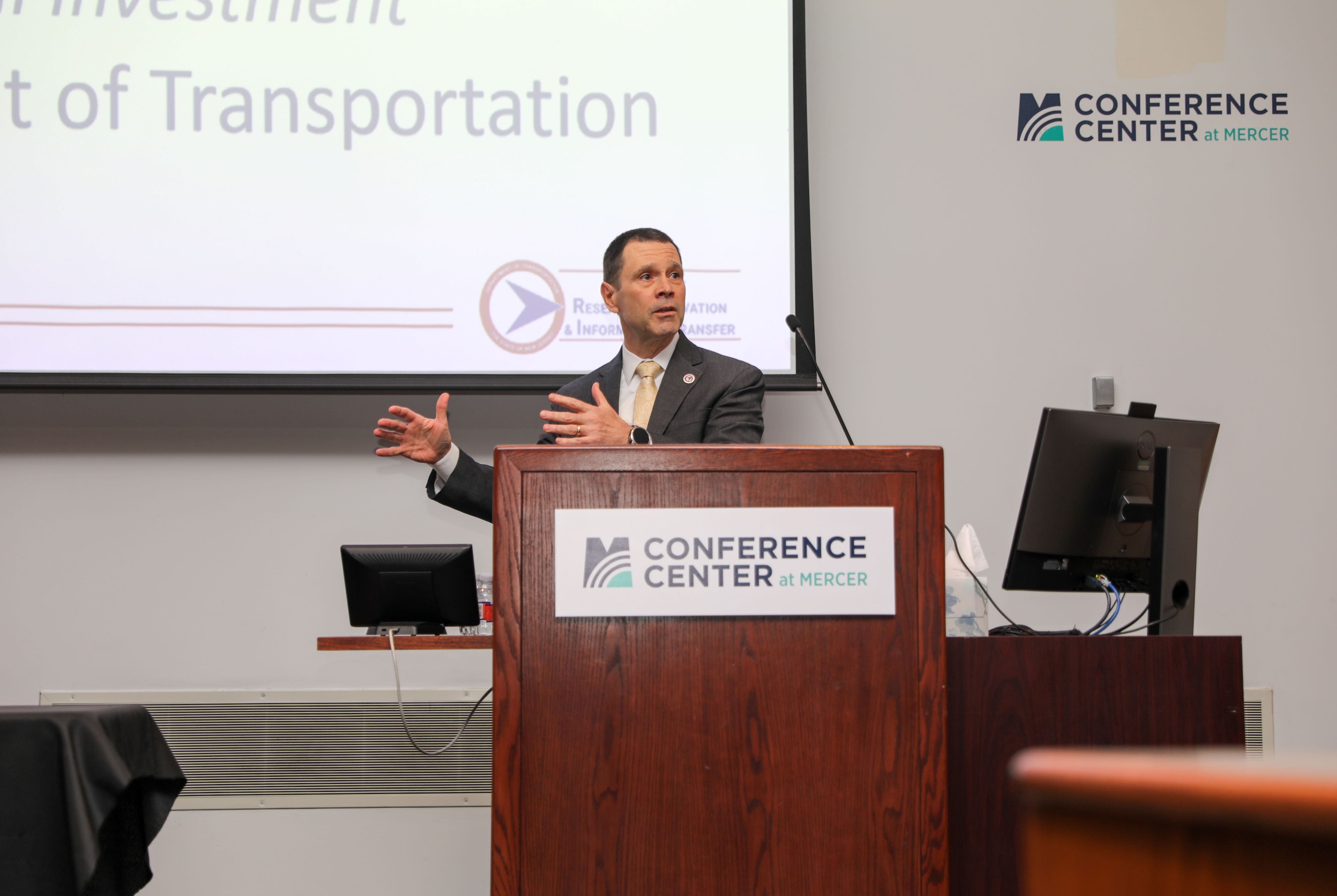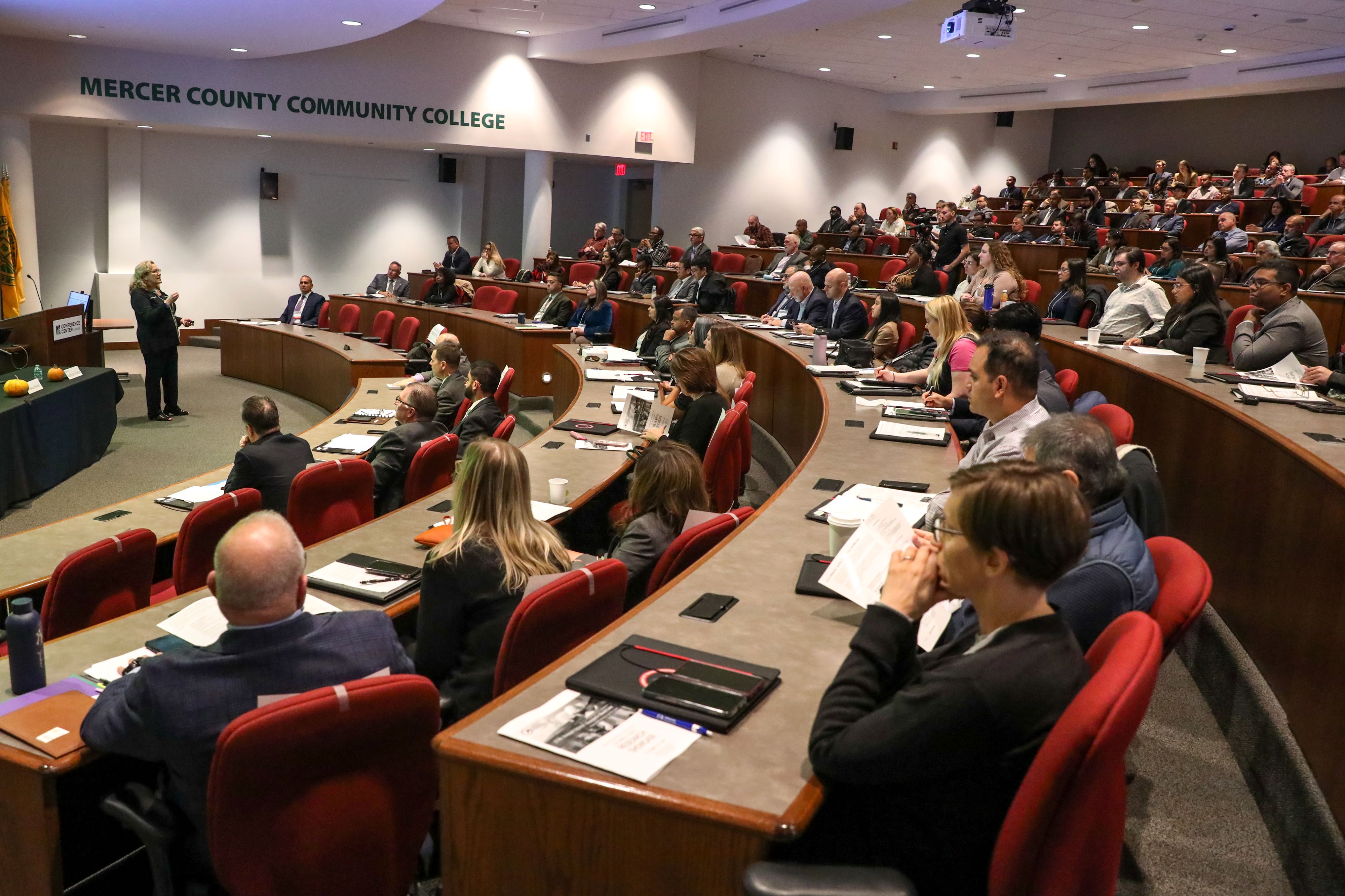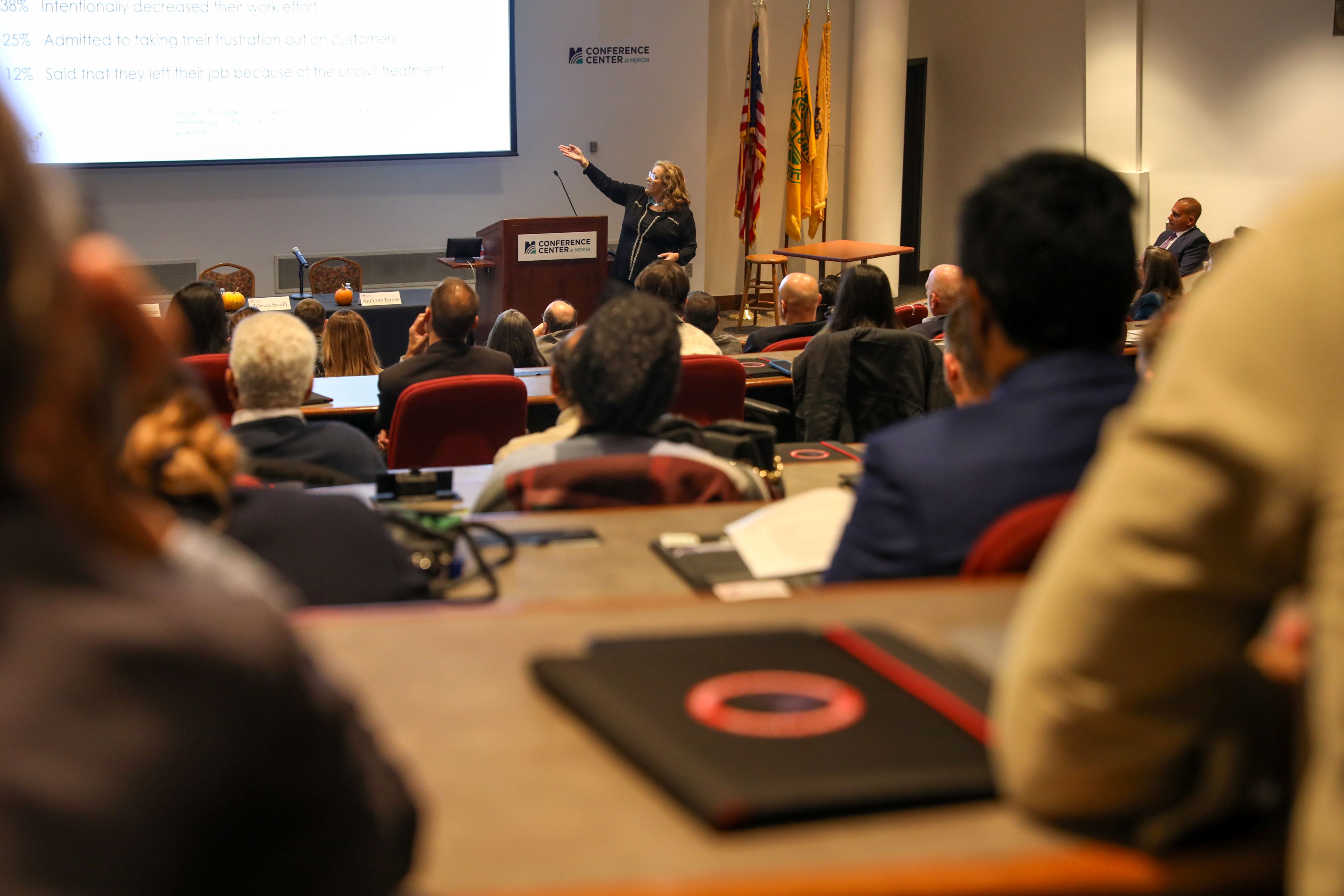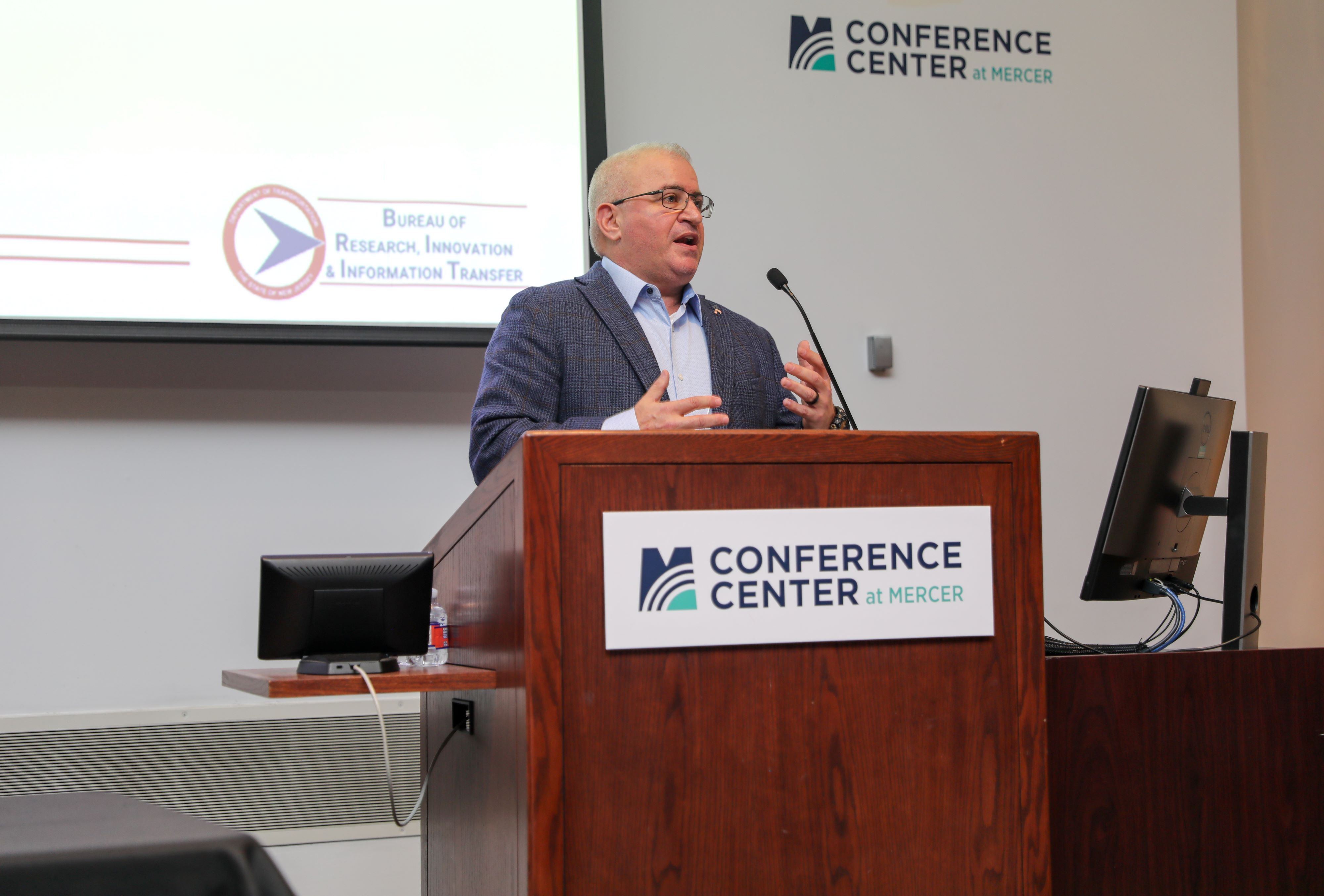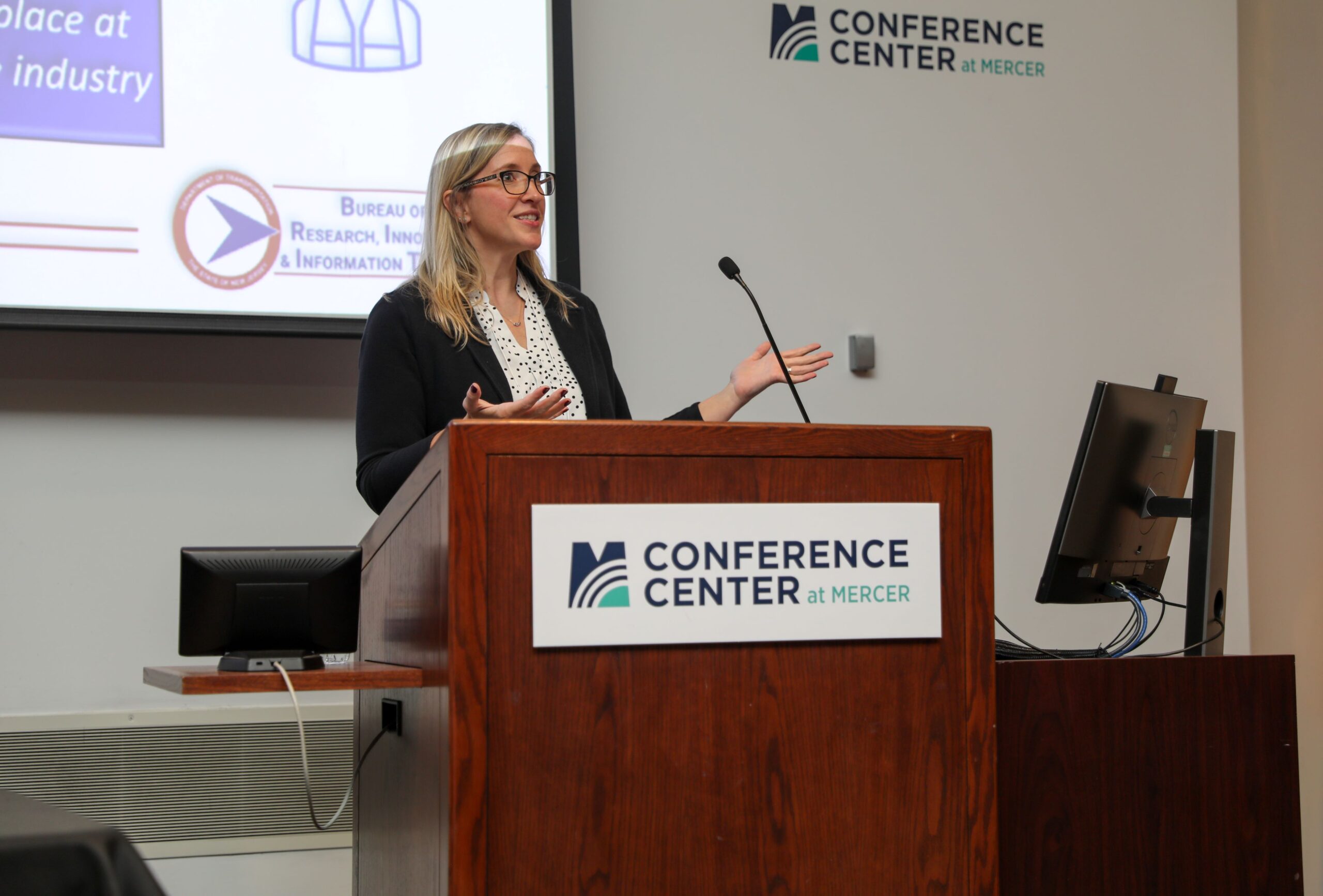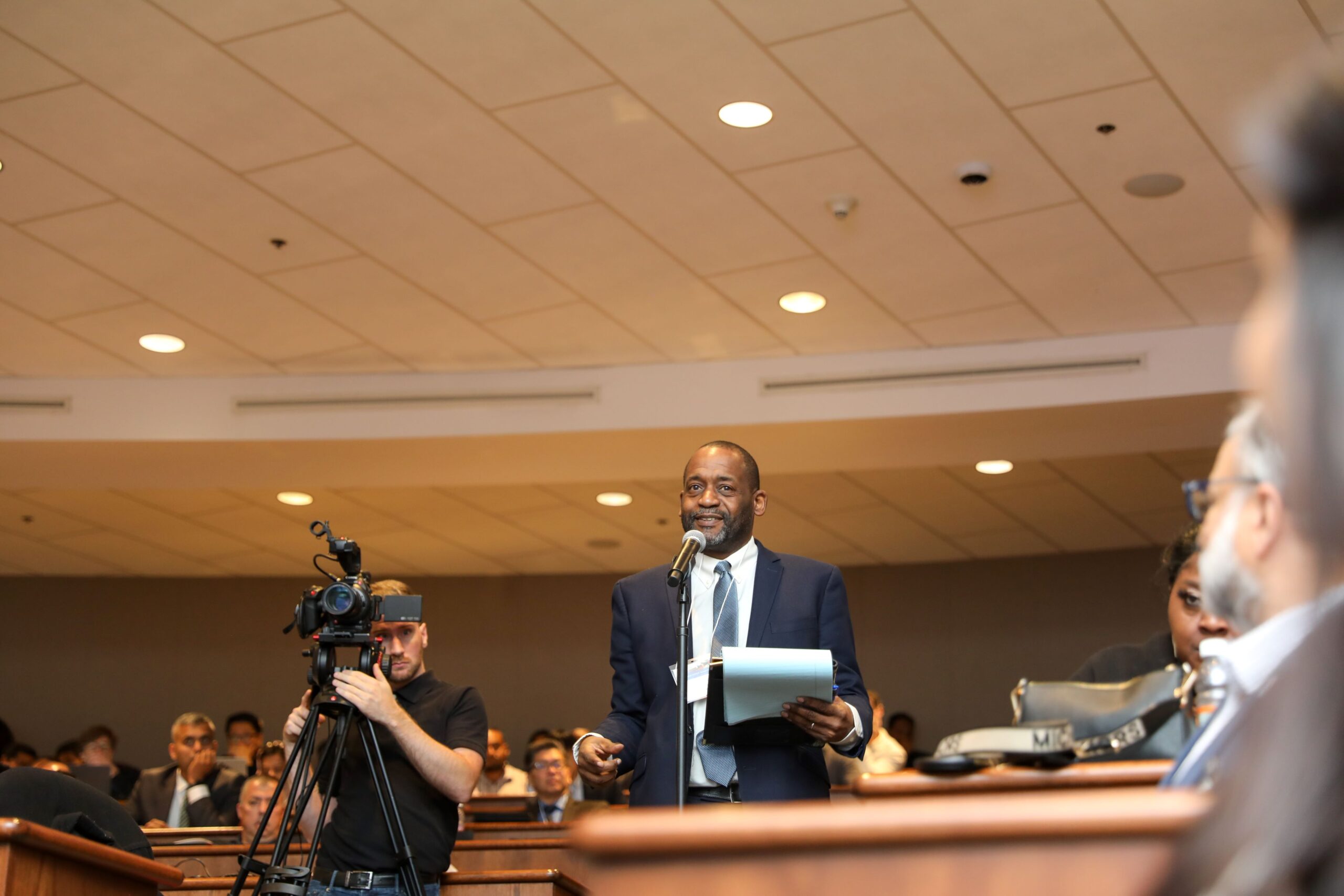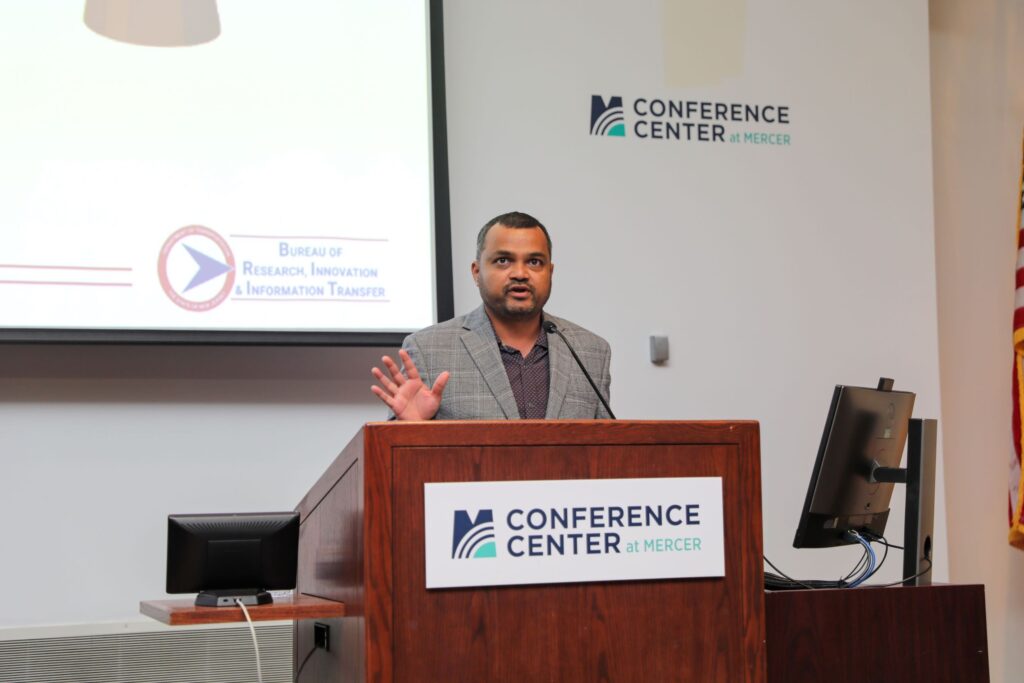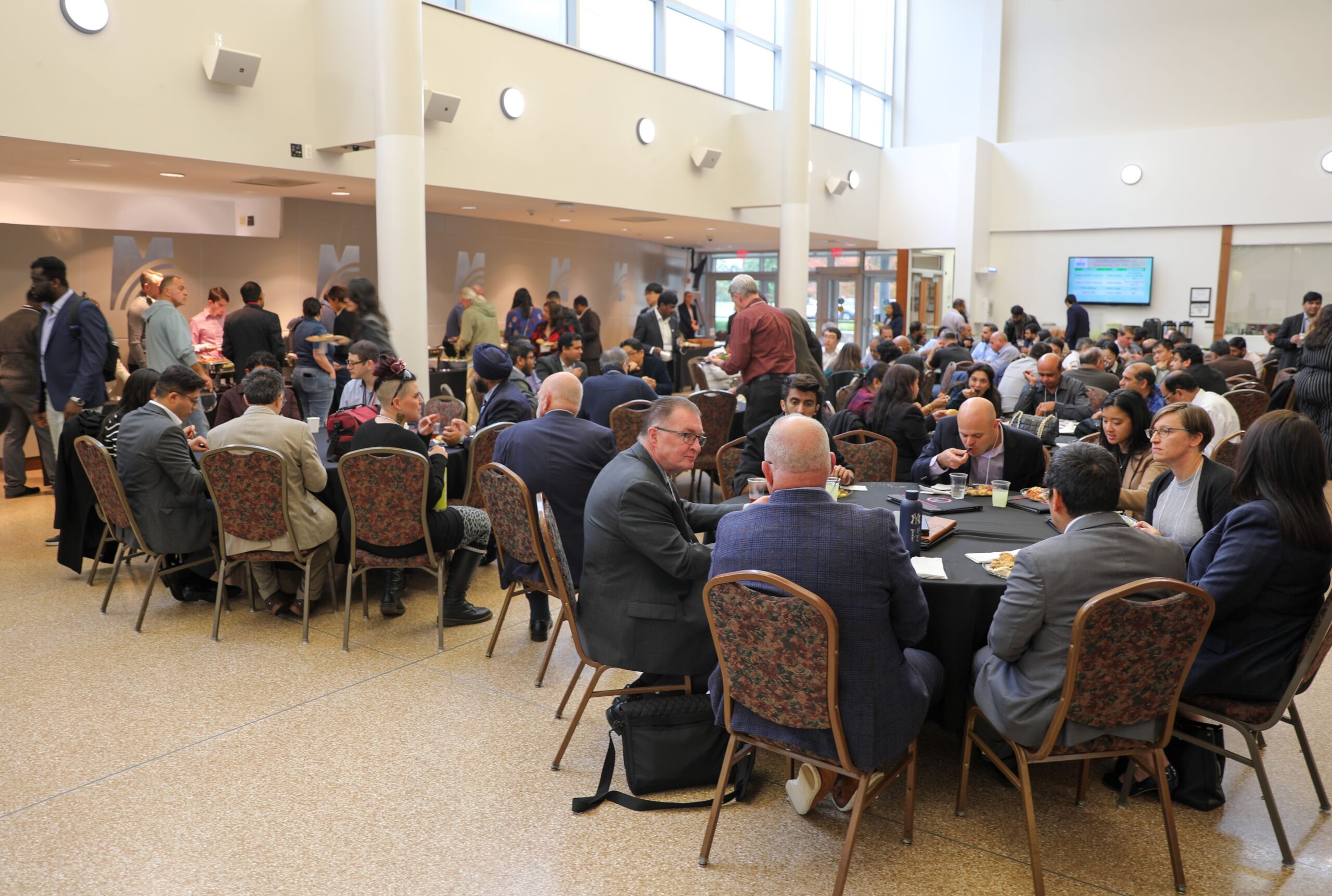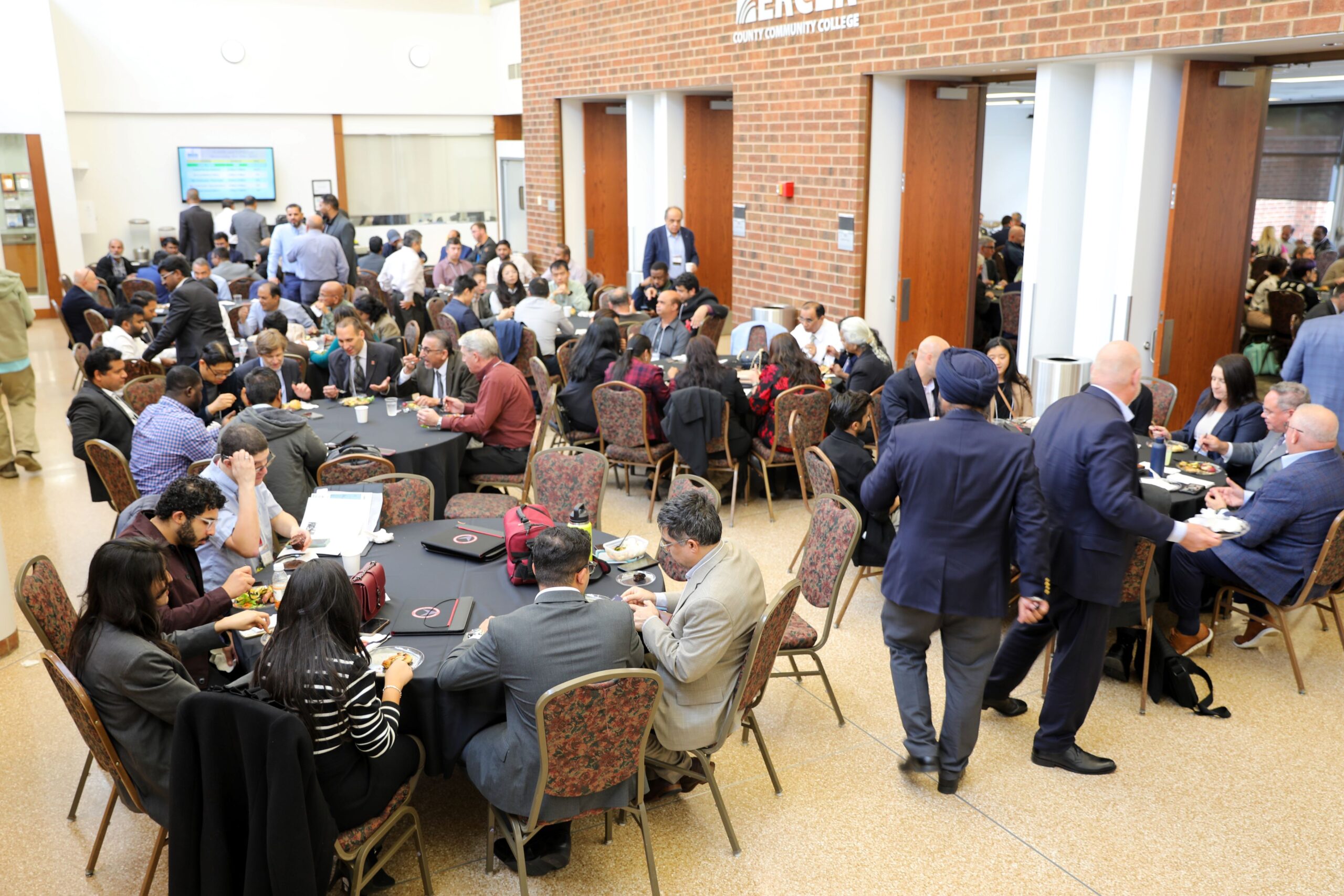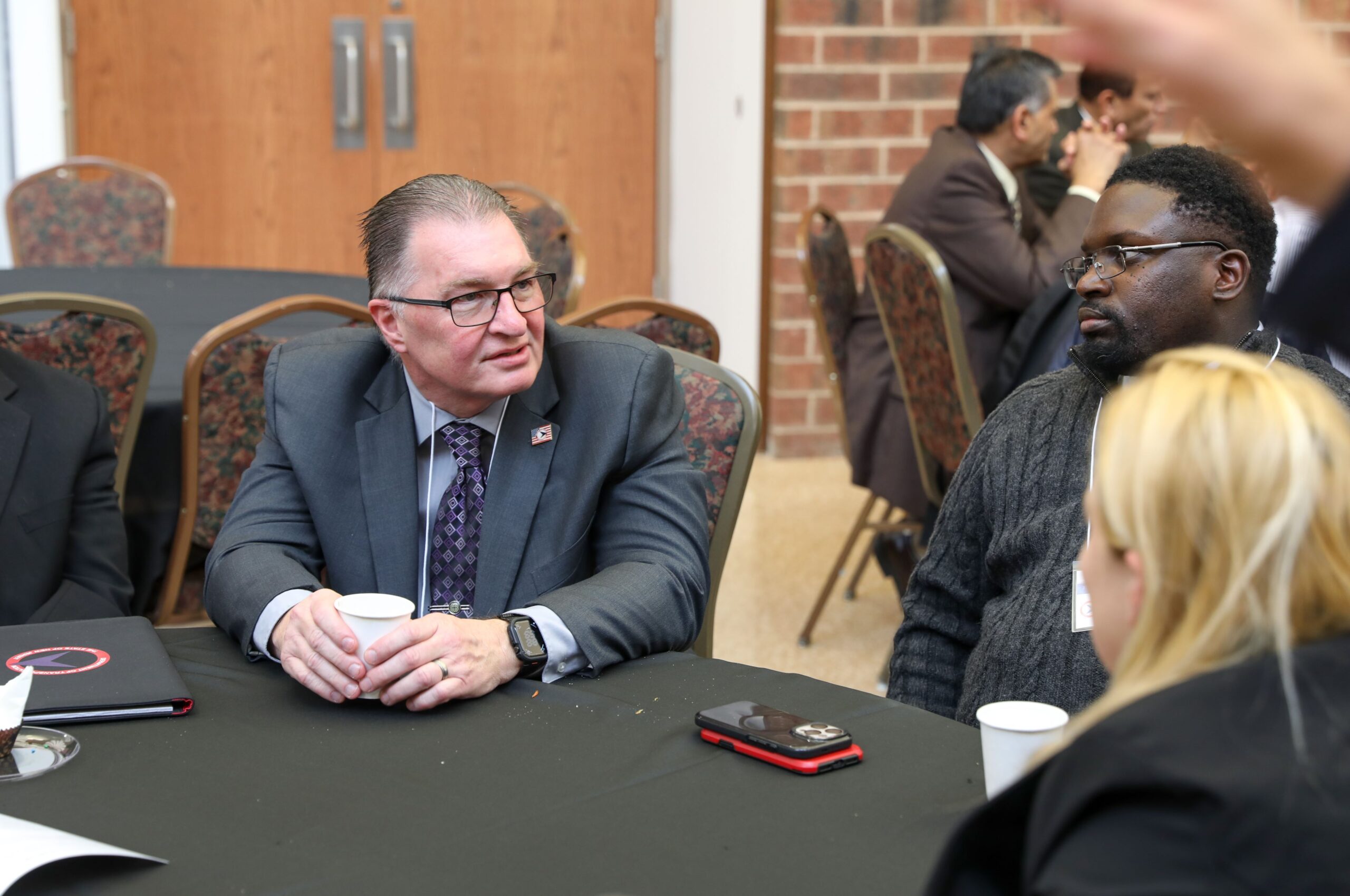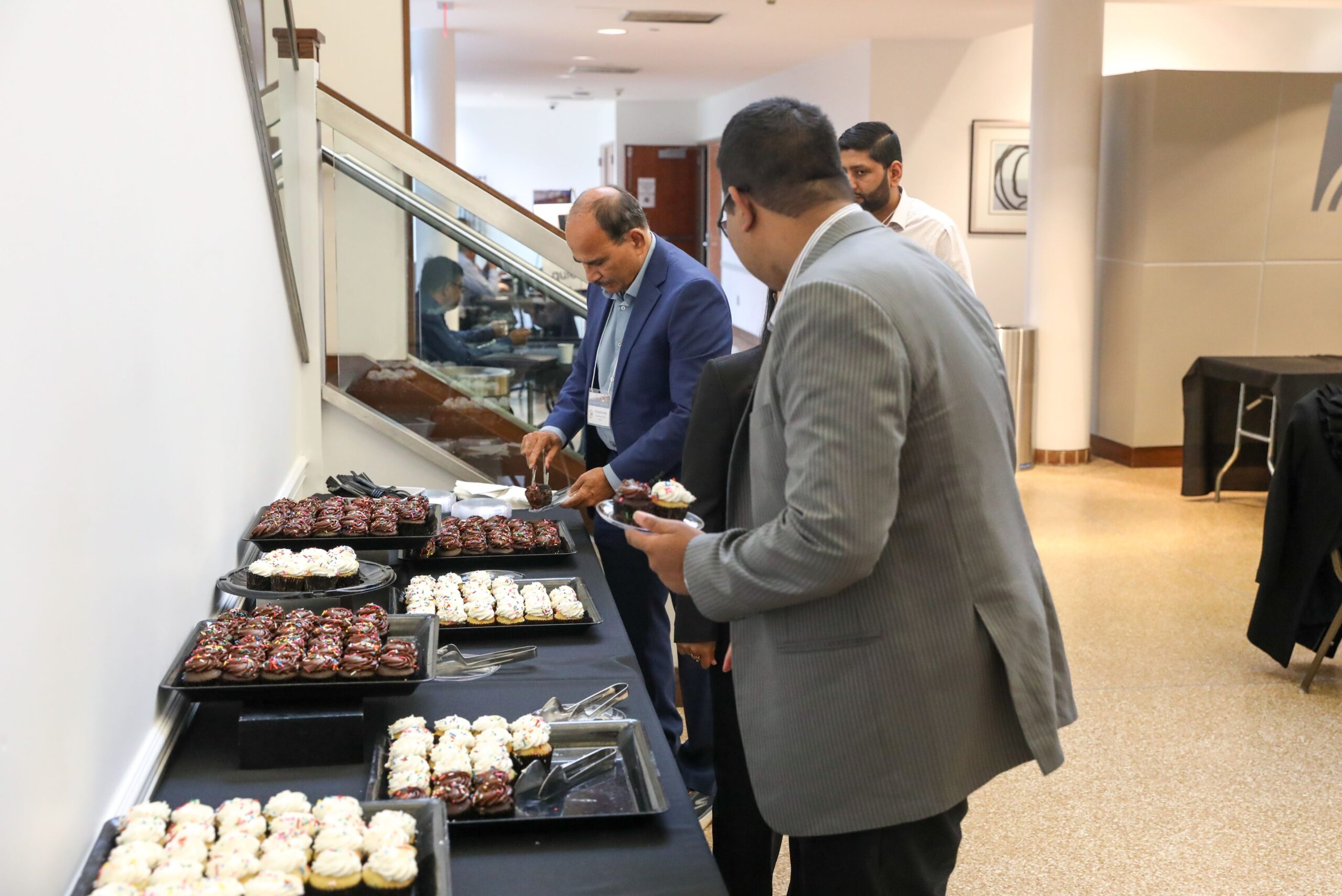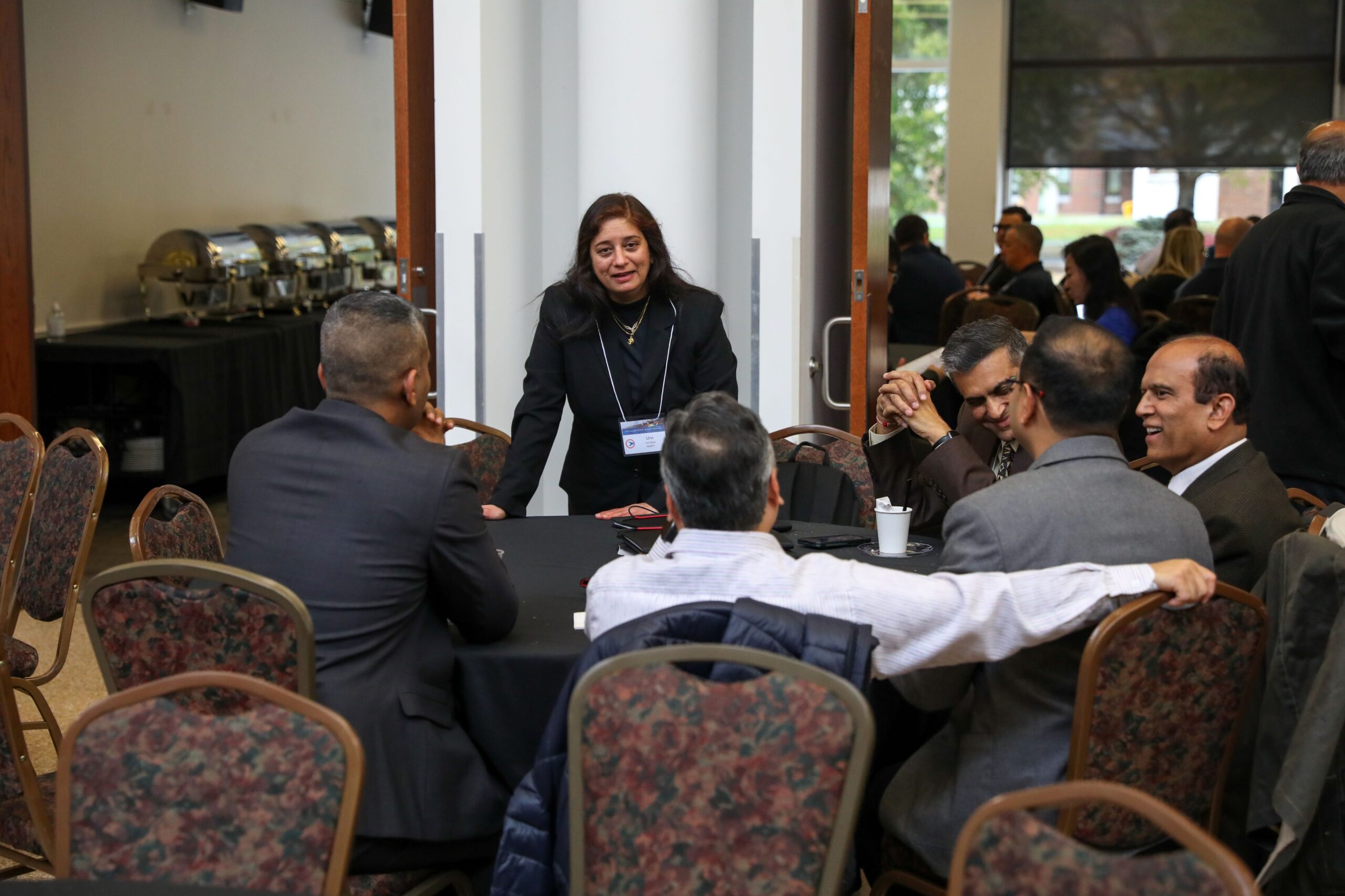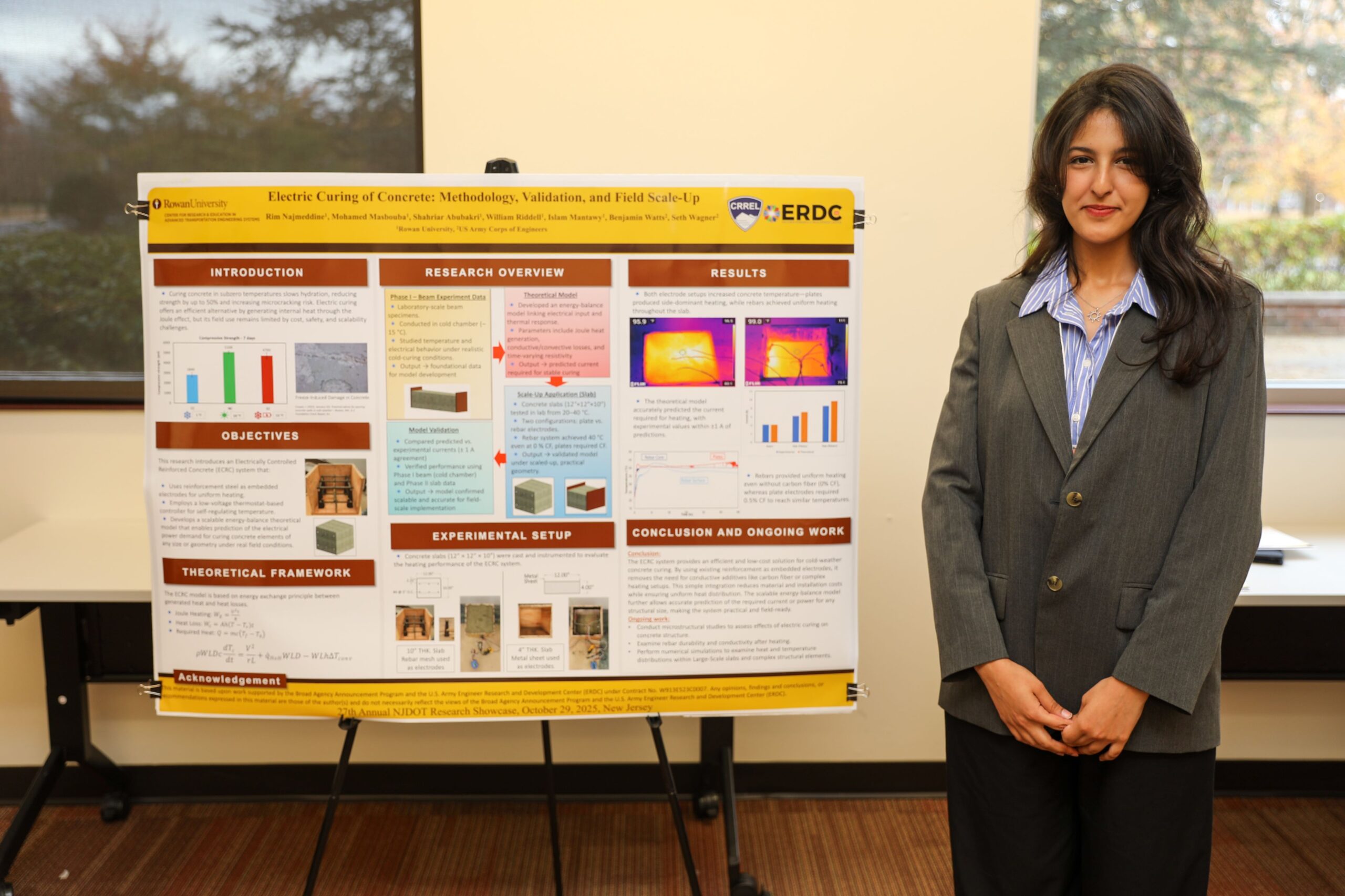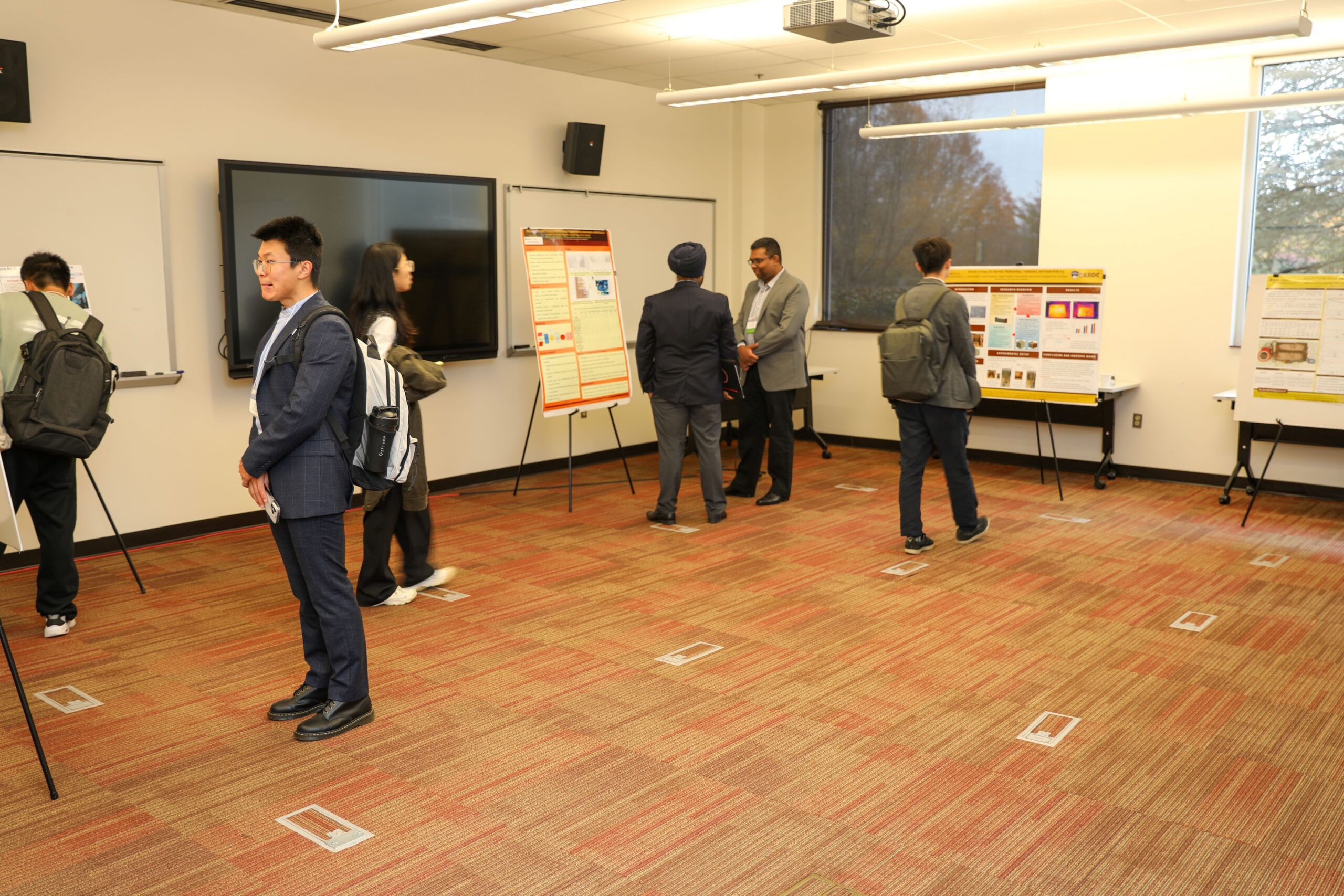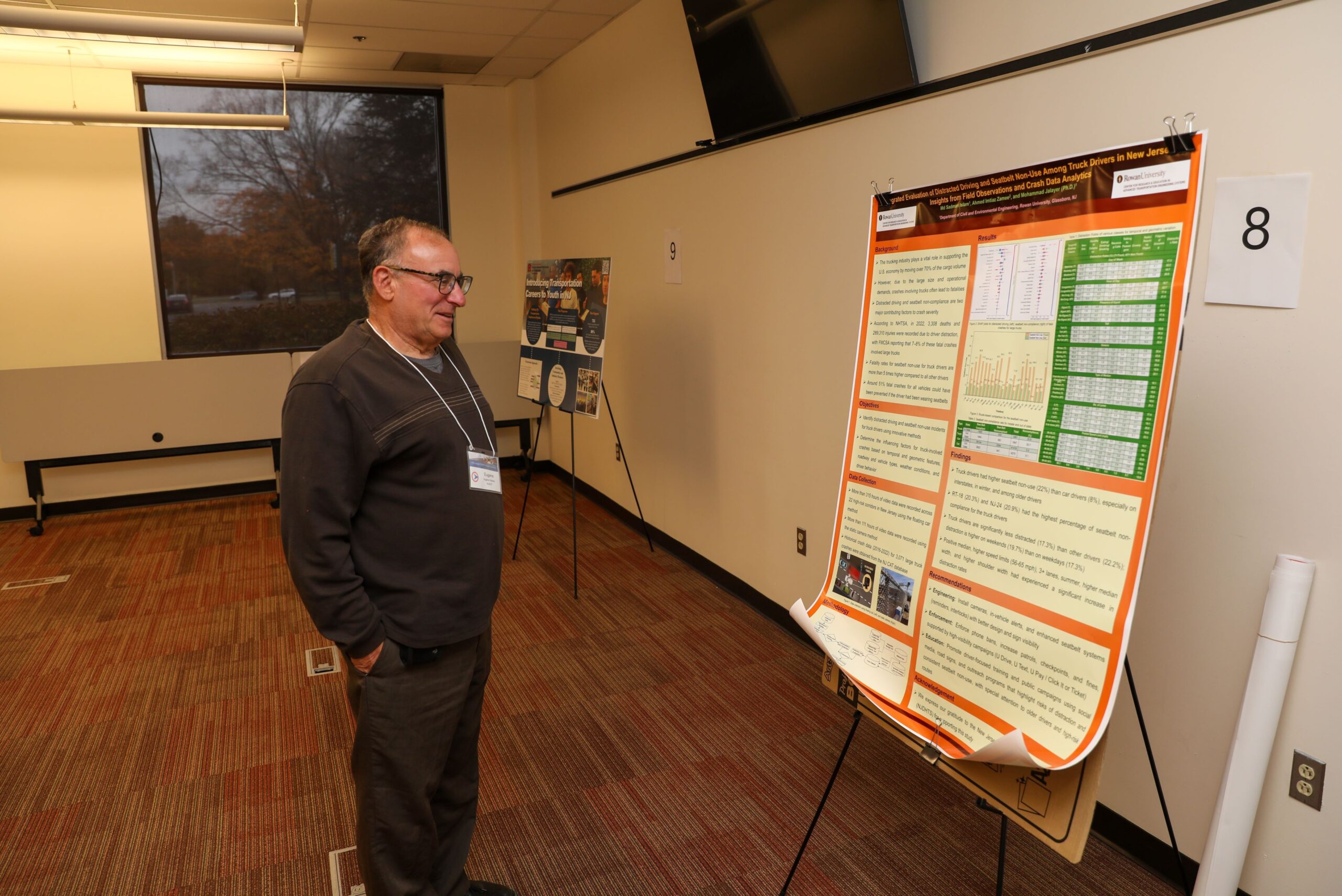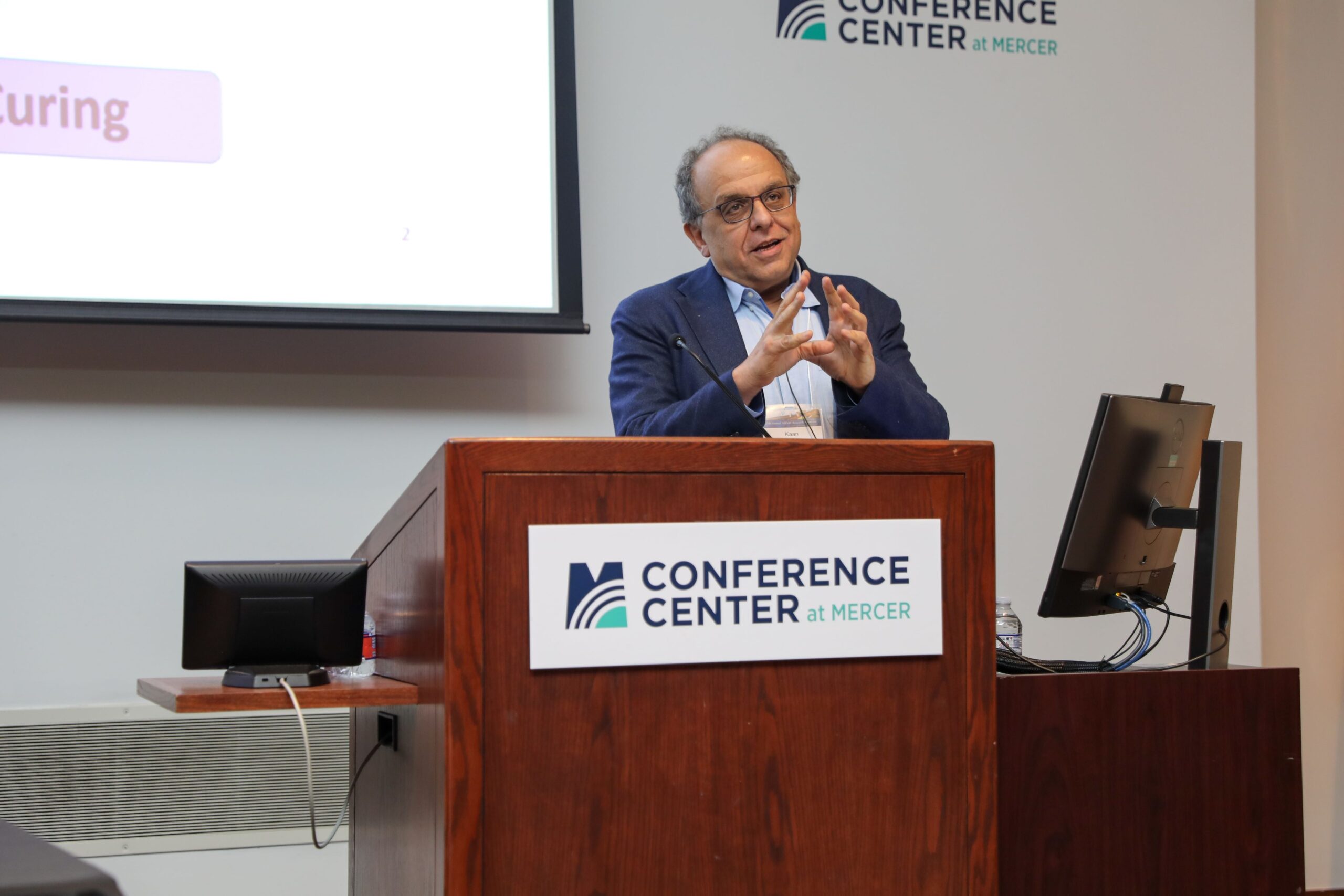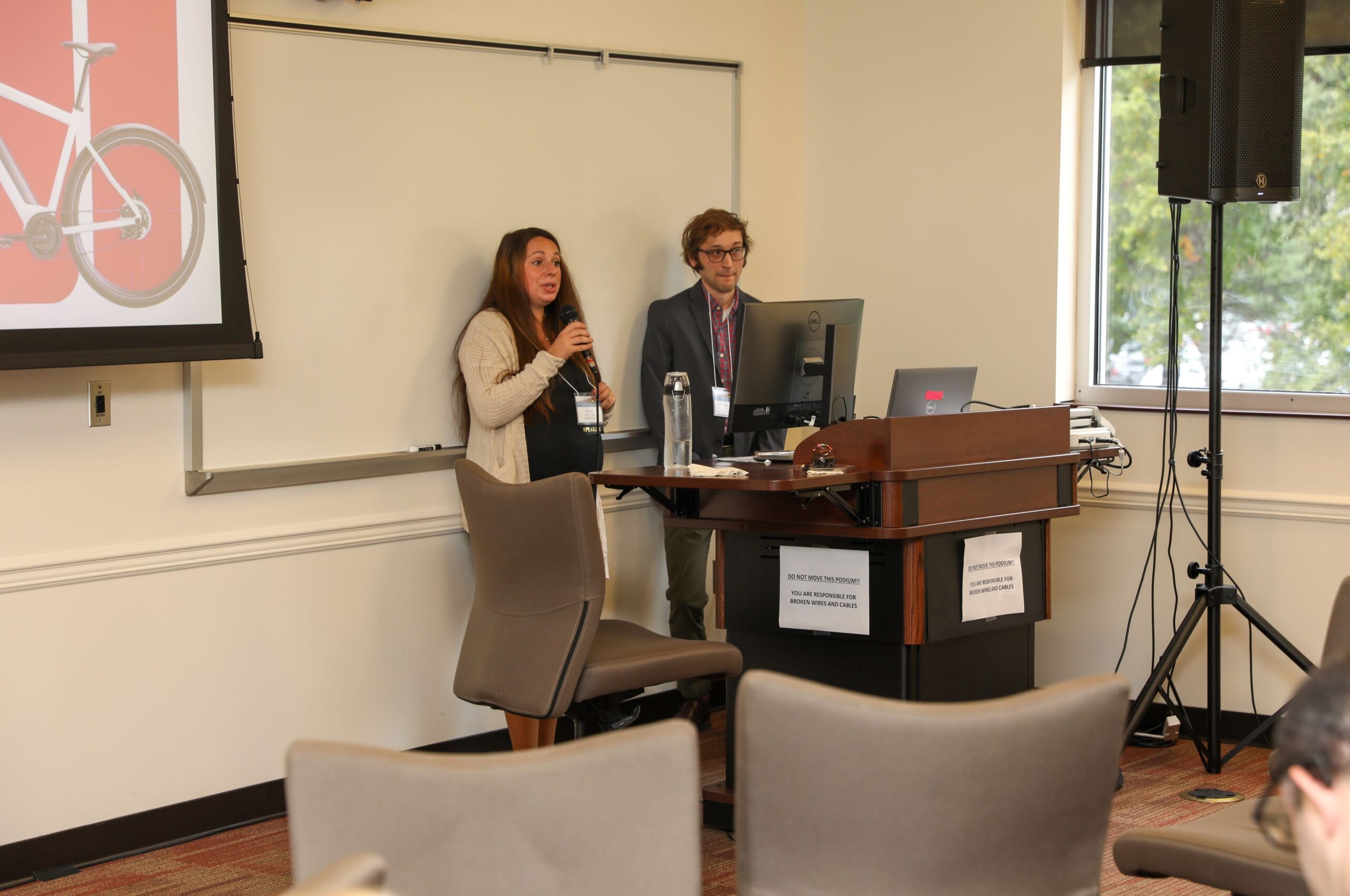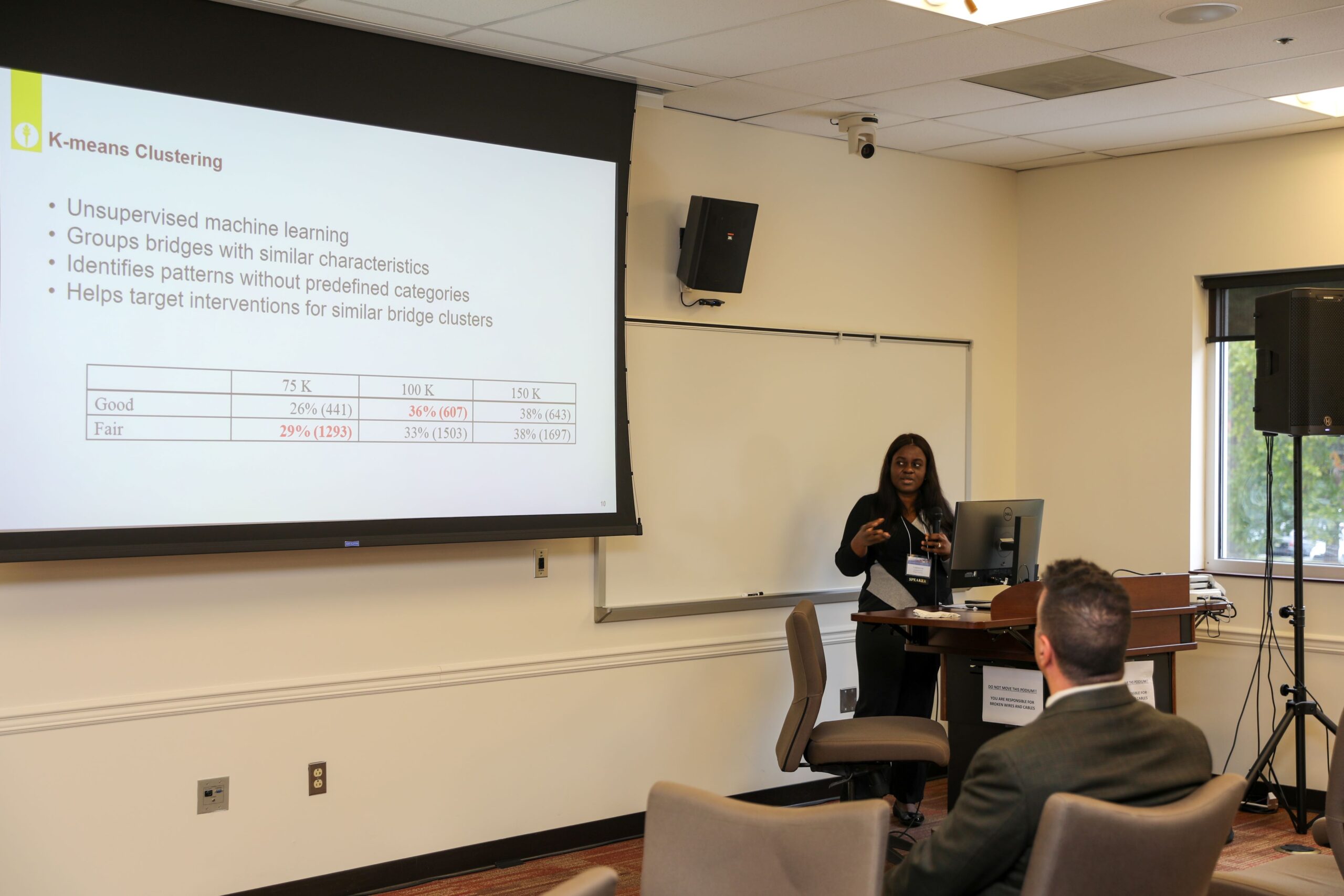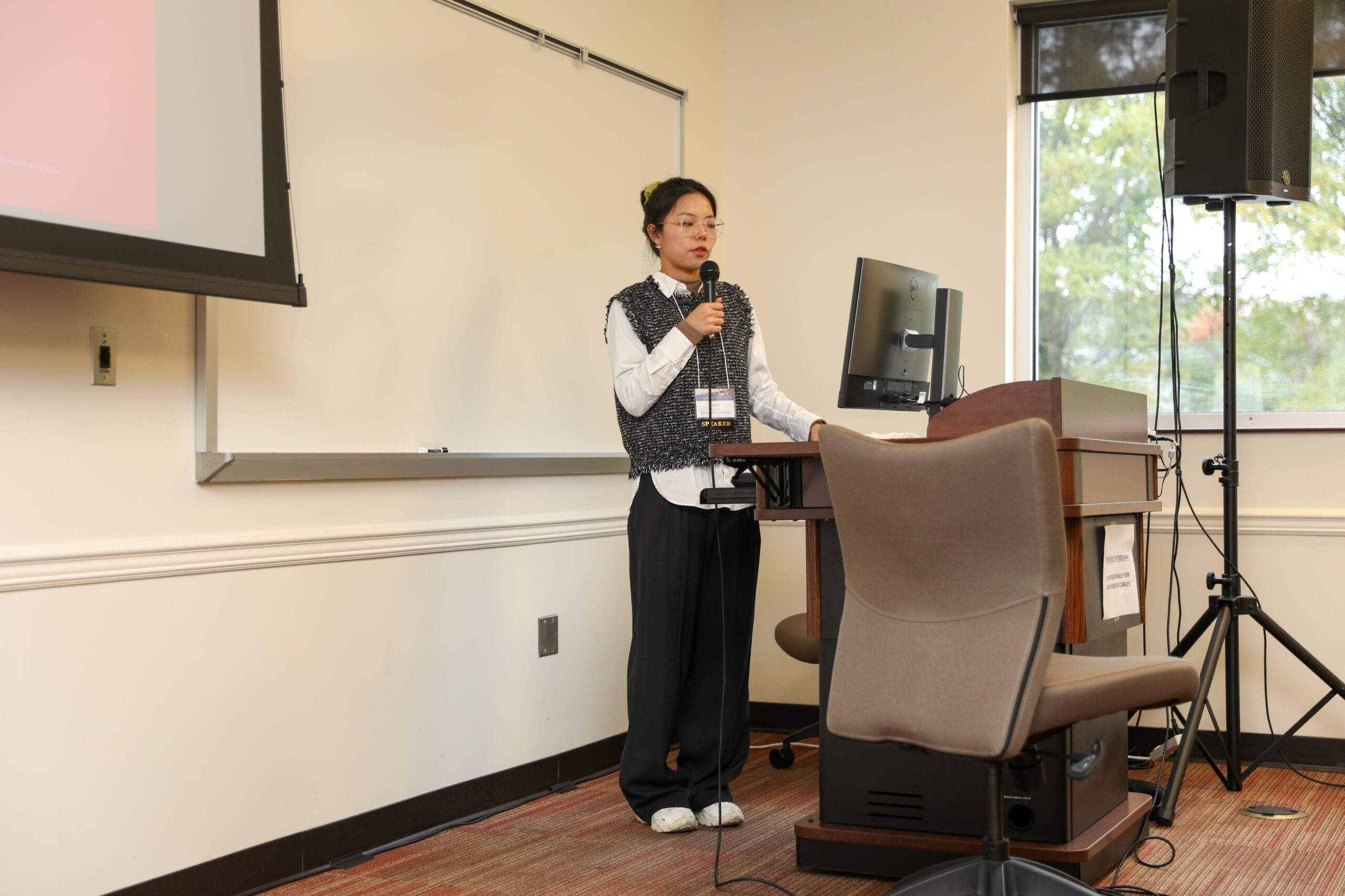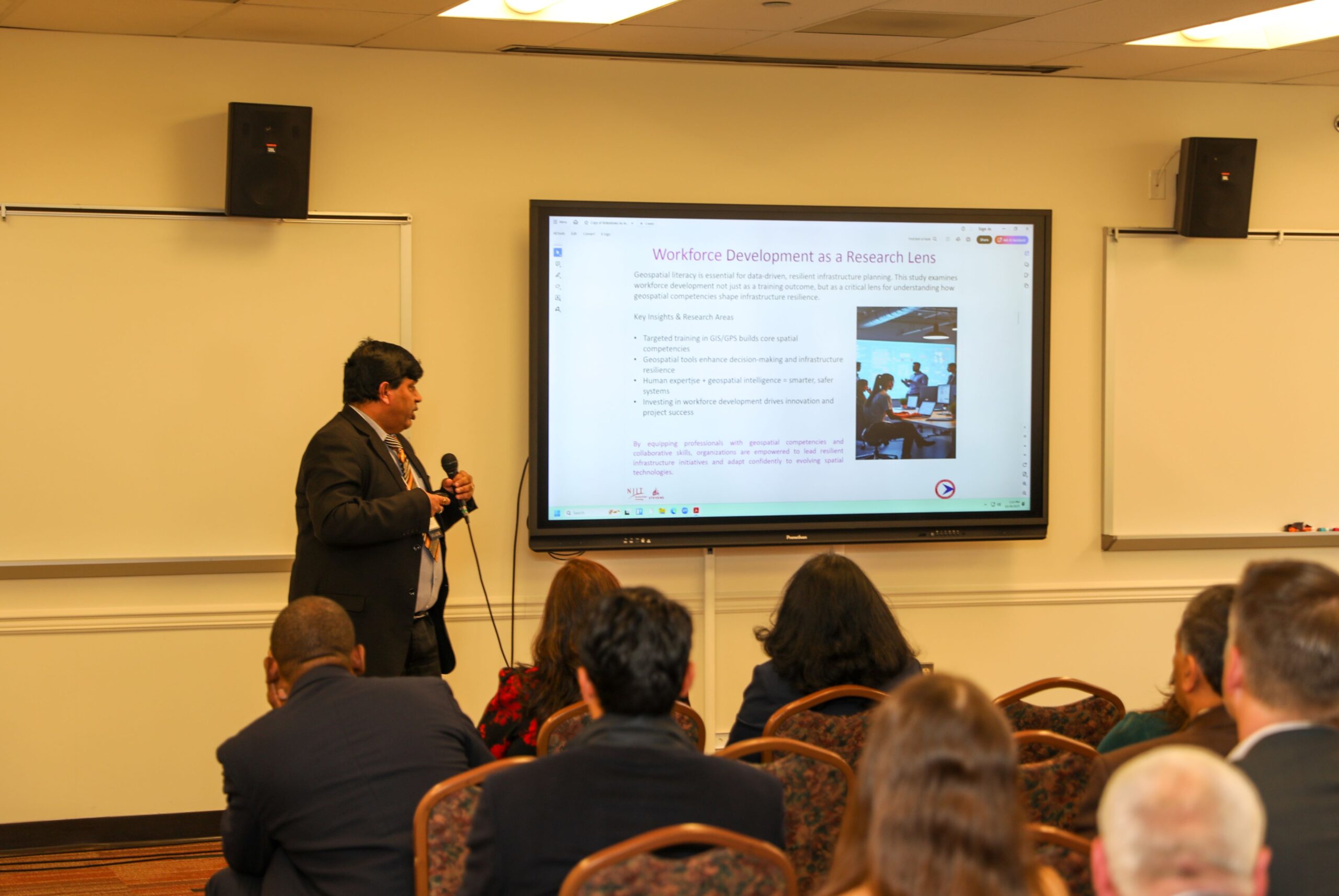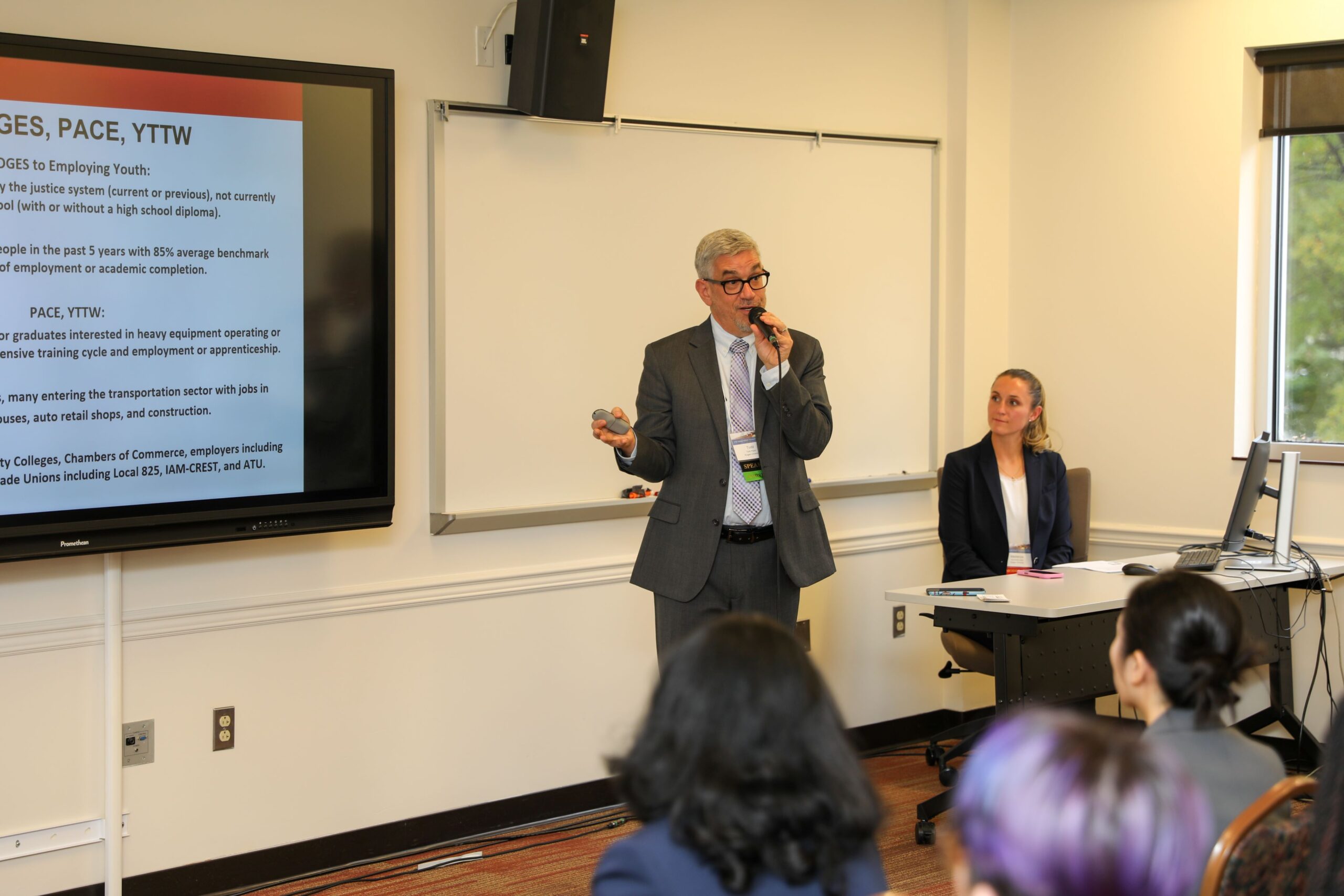The 27th Annual NJDOT Research Showcase brought together New Jersey’s transportation community. The event highlighted ongoing research and technology transfer initiatives conducted by NJDOT partners, including institutions of higher education, public agencies, and private-sector organizations. The event took place in-person at Mercer County Community College—with a livestreaming option—from 9:30 AM to 3:00 PM on October 29, 2025.
This year’s theme, “Preparing the Workforce for the Future,” shaped the morning plenary session. In the afternoon, the Showcase featured presentations on infrastructure, safety, and strategic workforce development and knowledge transfer, delivered by research faculty, staff, students, and private-sector representatives. NJDOT also presented several awards recognizing research and implemented innovations.
The Research Showcase Program Agenda provides more information on the day’s proceedings, including research topics, presentation abstracts, speaker biographies, and posters. Recordings of the plenary and breakout sessions, and the presentations and posters shared during the event can also be found below.
MORNING
WELCOMING AND INTRODUCTORY REMARKS
David Maruca, Program Development Coordinator, Rutgers Center for Advanced Infrastructure and Transportation (CAIT), opened the event. He covered housekeeping details, outlined the day’s agenda, and moderated the morning plenary.
Eric Powers, Assistant Commissioner of Statewide Planning, Safety, and Capital Investment, NJDOT, welcomed attendees and thanked participants, including NJDOT Bureau of Research, Innovation, and Information Transfer (BRIIT), Rutgers-CAIT, researchers, students, professors, the private-sector partners, and Mercer County Community College. He highlighted the event theme and emphasized that investing in our workforce provides the best measure for addressing future challenges.
NJDOT Commissioner Francis O’Connor delivered opening remarks. He underscored the importance of adapting to advancements in data, technology, and research and stated that developing talent is one of NJDOT’s smartest investments. He stressed that safety remains NJDOT’s top priority, adding that “behind every model, every dataset, every test run, is a very human goal—making sure people get home safely.” He recognized the students in the audience and beyond as the next generation of innovators positioned to make New Jersey’s transportation system smarter, stronger, and safer.
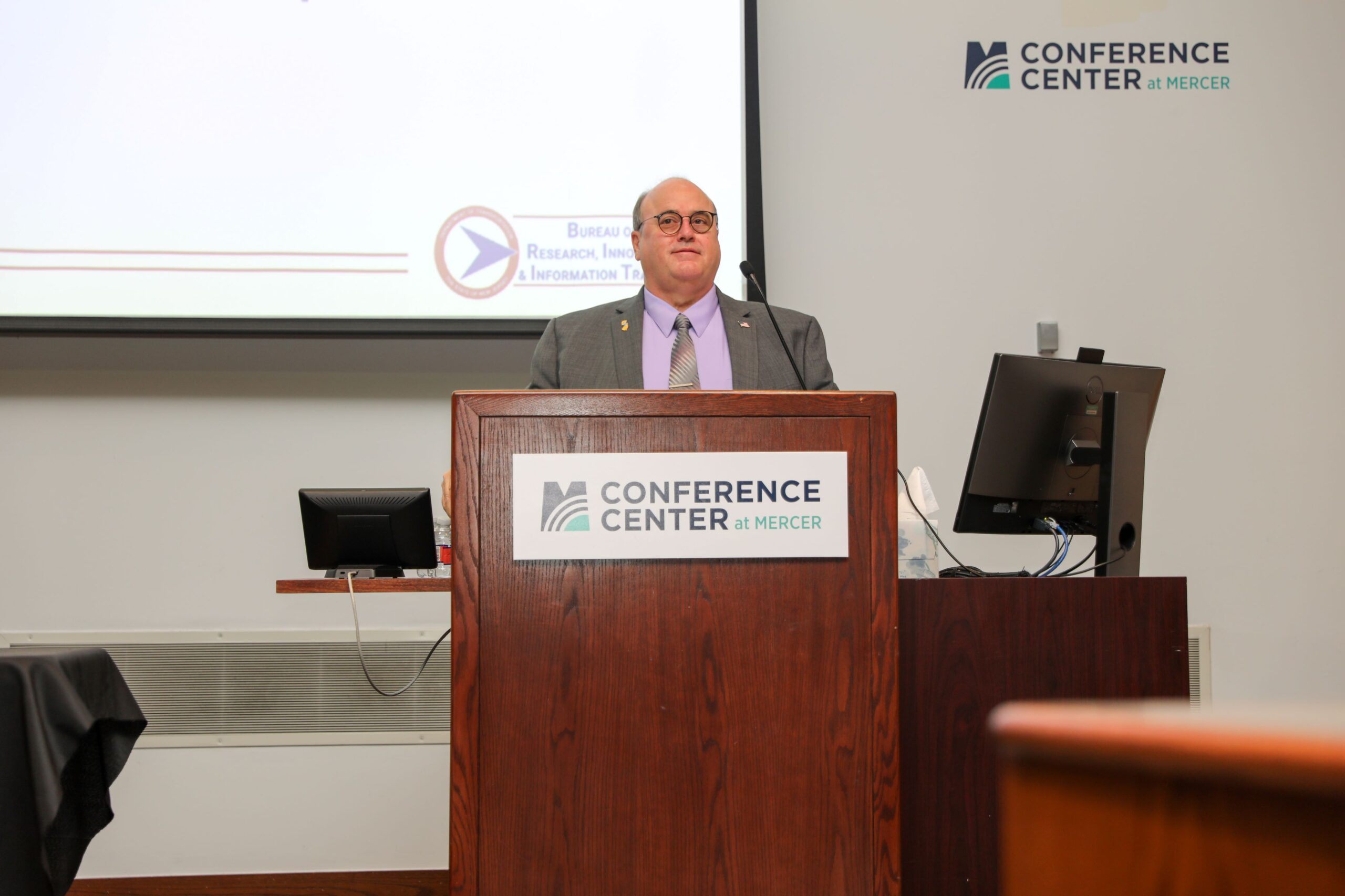
KEYNOTE ADDRESS
Debra Sabatini-Hennelly, Founder and President of Resiliti, gave the keynote address, “The Key to Unlocking Engagement, Collaboration, and Innovation in the Future Workforce.” She focused on emotional intelligence, supportive environments, and contextual awareness as essential components of innovation and effective organizational culture.
She opened by sharing her career trajectory, beginning as a construction supervisor for Exxon, where she learned the importance of relying on experts, coordinating complex projects, and navigating regulatory requirements. Those experiences motivated her to pursue law school, where she deepened her understanding of how context and problem-solving shape innovation.
Sabatini-Hennelly emphasized that innovation thrives when people understand both their own emotions and the emotions of others. Using a Mentimeter survey, she asked the audience to reflect on how they were feeling physically, intellectually, and emotionally. She noted that many employees—particularly women—were historically expected to suppress emotions at work, producing burnout and inhibiting progress.
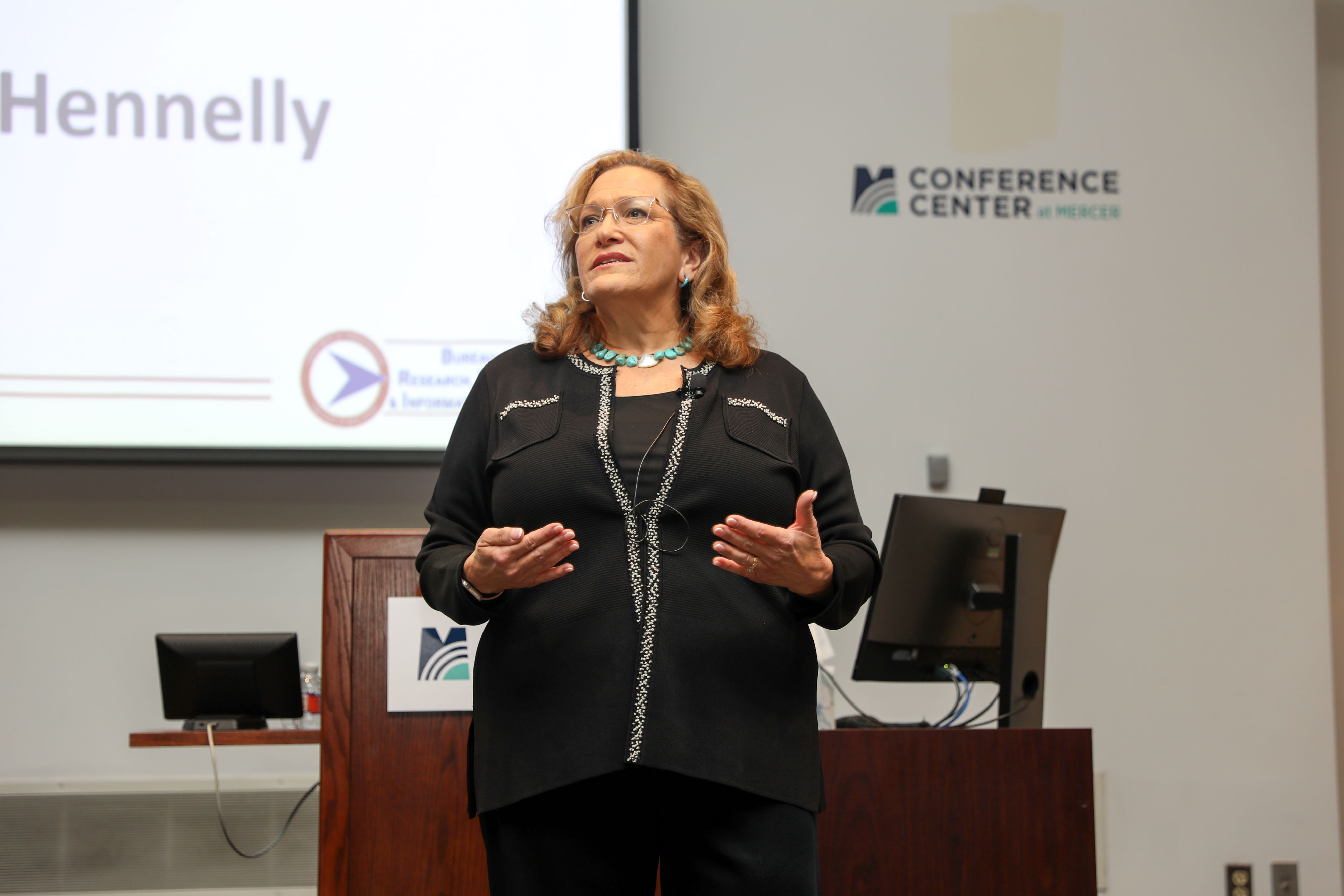
To illustrate the connection between emotional and rational thinking, she used the metaphor of a rider and an elephant: the rider represents logic and planning, while the elephant represents emotions and intuition. The rider may know the direction, but the elephant provides the momentum—meaning that people perform at their best only when emotional needs are acknowledged and aligned with goals. She linked this to workforce data showing that in 2024, 37 percent of employees left organizations due to culture and engagement, and 31 percent left due to work-life balance.
She highlighted Gallup engagement research showing that disengaged teams experience significantly higher absenteeism and more safety incidents, while engaged teams—those with a culture grounded in wellbeing and psychological safety—display greater accountability, pride, and performance. When leadership models organizational values, employees gain a sense of ownership and responsibility.
Sabatini-Hennelly cited Amy Edmondson’s The Fearless Organization and Tim Clarke’s The Four Stages of Psychological Safety. She emphasized the importance of environments where employees feel safe to learn, contribute ideas, and challenge assumptions without fear of retaliation or embarrassment. Breaches in psychological safety lead to apathy, reduced commitment, and lost productivity. She stressed that open communication is the “nervous system” of an organization—vital for decision-making and innovation.
She concluded by highlighting the challenges and opportunities of today’s multi-generational workforce. She encouraged leadership to recognize and adapt to different communication preferences while finding common ground through shared goals. Using the failed Tacoma Narrows Bridge and the successful push-to-start ignition button as examples, she showed how listening to diverse perspectives and combining technical expertise with empathy drives innovation. She emphasized that preparing the future workforce requires building both skills and supportive cultures. Employees should feel valued and empowered to contribute.
MORNING SESSION PANEL DISCUSSION
The plenary session continued with an interactive panel discussion, “How Are New Jersey Transportation Agencies Preparing the Workforce for the Future?” Representatives from NJDOT, NJ TRANSIT, and the private sector discussed how their organizations are supporting current and future staff. Topics included:
- Creating growth opportunities for early-career employees
- Sharing institutional knowledge across generations
- Recruiting and retaining talent
- Fostering innovative and supportive workplace cultures
- Adapting to new technologies and practices, including AI
Panelists included:
- Anthony Ennas, Senior Director of Statewide Operations, NJDOT
- Rebecca Savelli, Human Resources Manager II, NJDOT
- Savita Lachman, Deputy Chief Human Resources Officer, NJ TRANSIT
- Christen Thomas, Senior Manager, Deloitte Consulting LLP
Panelists answered questions from the moderator and attendees on topics such as AI, workforce policy limitations and other organizational or policy constraints, and knowledge retention.
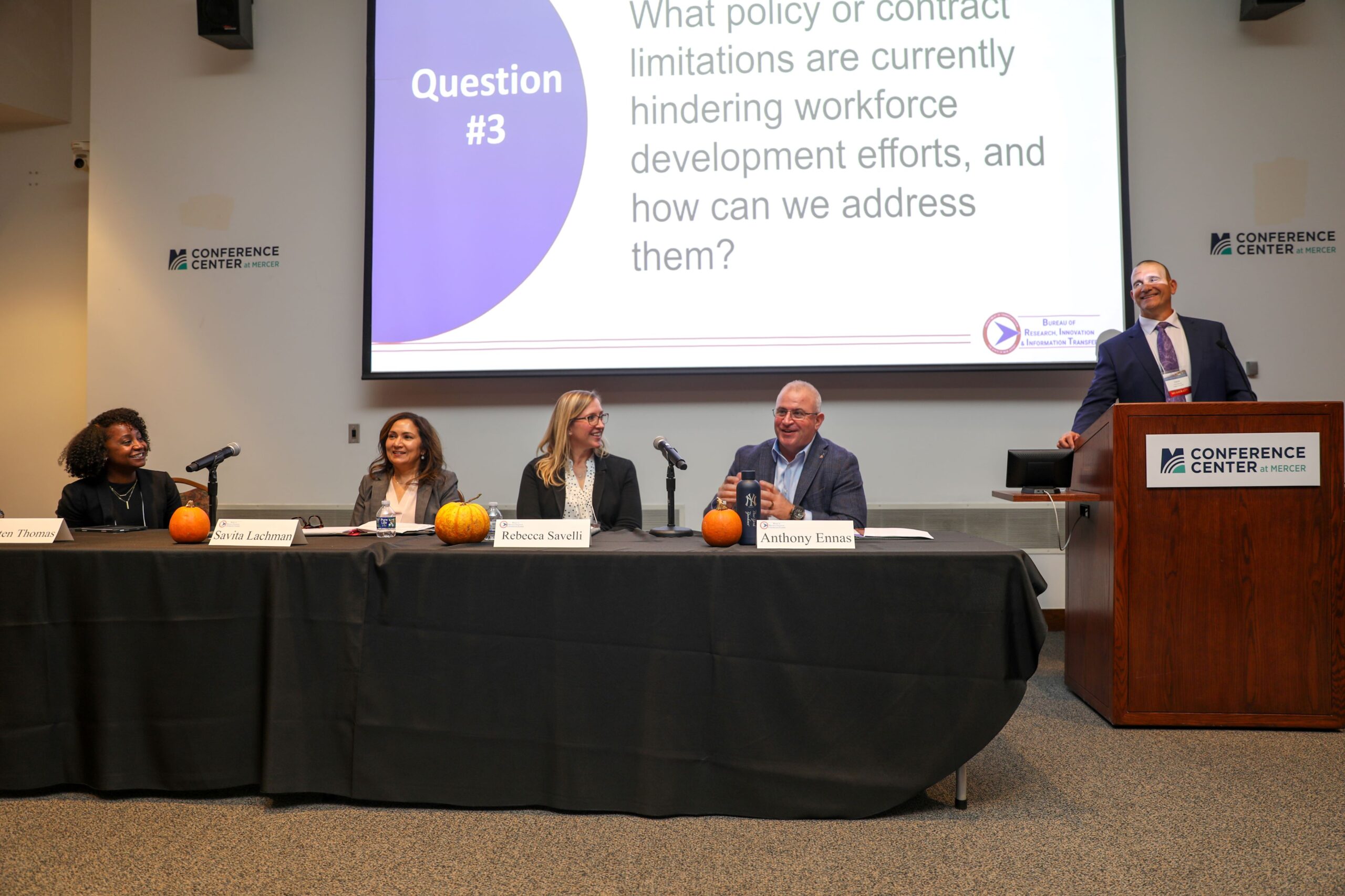

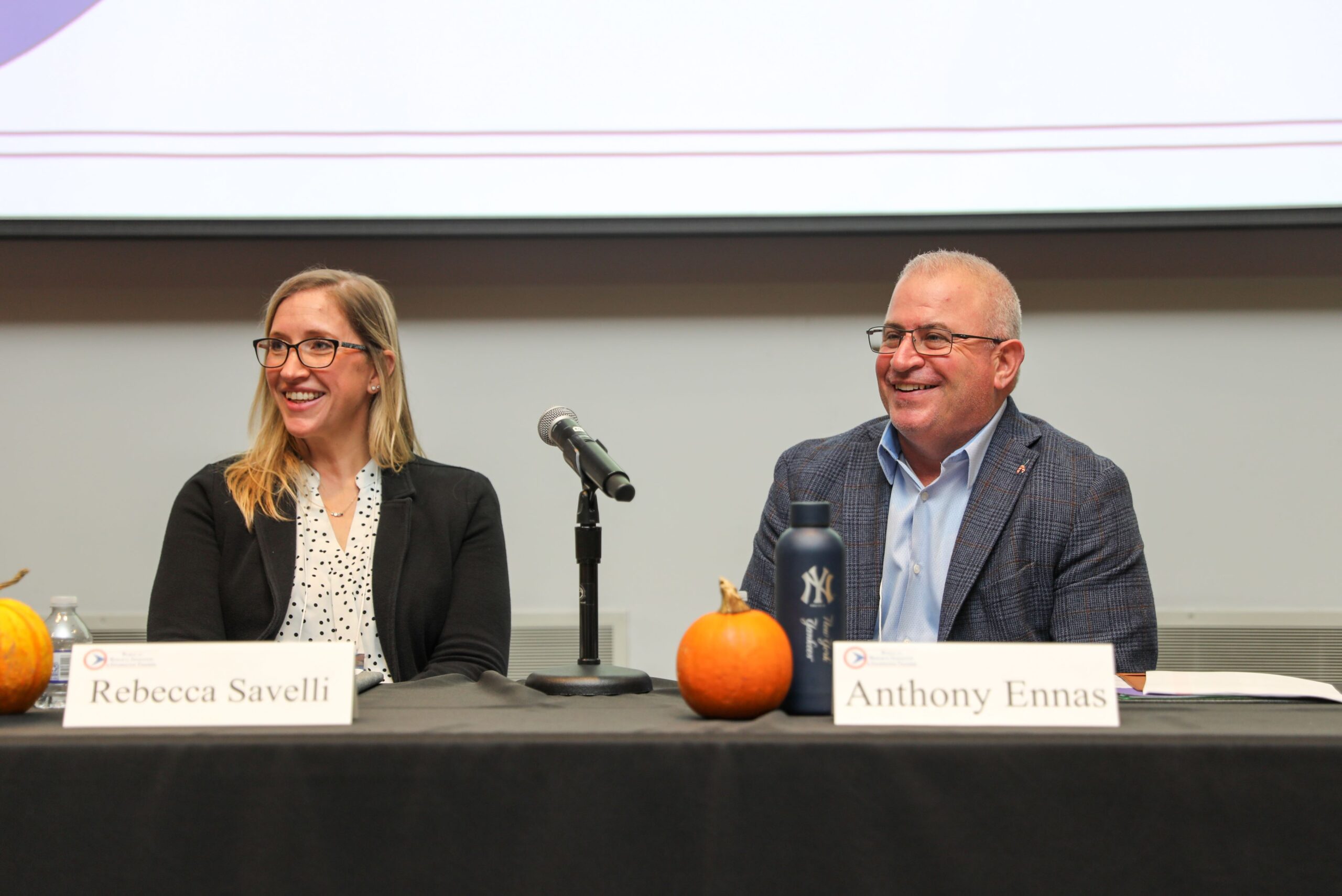

AWARDS
Dr. Giri Venkiteela, Innovation Officer at NJDOT, presented awards recognizing research, innovation, and implementation efforts throughout New Jersey.
2025 Outstanding University Student in Transportation Research Award
Recipient: Xiaoyu Zhang, Rutgers University
Recognized for his contributions to the NJDOT-sponsored Innovative Pothole Repair Materials and Techniques project and the Pavement Resource Program. His work included helping to develop a low-cost 3D multi-camera imaging system that rapidly scans for potholes.
2025 NJDOT Research Implementation Award
Recipient: Dr. Hao Wang, Rutgers University, Innovative Pothole Repair Materials and Methods
This project demonstrated that pre-heating pavement prior to repair improves bonding between existing asphalt pavement and patch materials, reducing the need for re-patching and resulting in cost savings for NJDOT. The project also received a 2024 AASHTO Supplementary National High Value Research Award.
2025 Best Poster Award
Recipient: Md Tufajjal Hossain, New Jersey Institute of Technology
Poster: Harsh Braking as a Surrogate for Crash Risk: A Segment Analysis with Connected Vehicle Telematics.
The research compared connected vehicle telematics with New Jersey police crash report data to identify roadway segments where harsh braking indicates higher crash risk. This information allows transportation agencies to take proactive measures to prevent crashes before they occur.
2025 NJDOT Build a Better Mousetrap (BABM) Award
Recipients: Jack Longworth, Cheryl Goldman, Vandana Mathur, Michael Juliano, Shawn Mount, and Chrystal Section, NJDOT Division of Mobility Engineering and Operations
Innovation: Safety Service Patrol—Picture Language Flashcards
The team was recognized for developing picture-based language flashcards that enable Safety Service Patrol (SSP) staff to communicate with people with limited English proficiency in emergency situations. The flashcards include descriptive images and translations into 12 languages. The Showcase featured a short video explaining their development and demonstrating their use.
NJDOT also took this opportunity to acknowledge two projects that received national recognition:
2025 National High Value Research Awards
Innovative Techniques and Materials for Preventing Concrete Shrinkage Cracking
AASHTO Honorable Mention Award in Supplemental Maintenance, Management and Preservation
Principal Investigators: Gilson Lomboy, Shiho Kawashima, Douglas B. Cleary, and Cheng Zhu
Research Project Manager: Giri Venkiteela
Technical Advisory Panel: Yong Zeng and Emmanuel Bassey
Real-time Traffic Signal System Performance Measurement
AASHTO Honorable Mention Award in Supplemental Safety, Security and Emergencies, and Maintenance
Principal Investigators: Peter J. Jin, Mohammed Jalayer, and Thomas Brennan
Research Project Manager: Priscilla Ukpah
Technical Advisory Panel: Kelley McVeigh and Hirenkumar Patel
PRESENTATION OF AWARDS
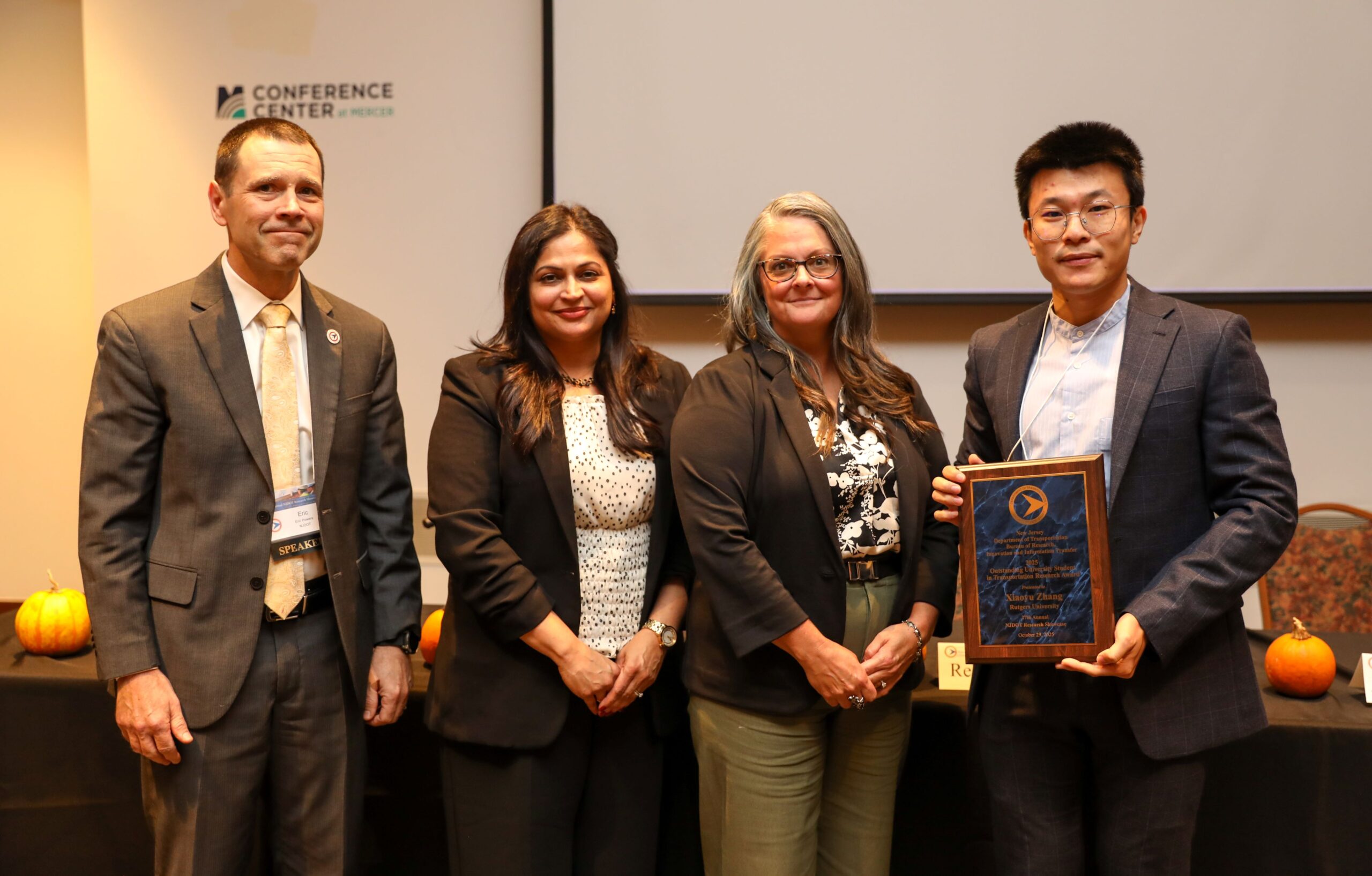

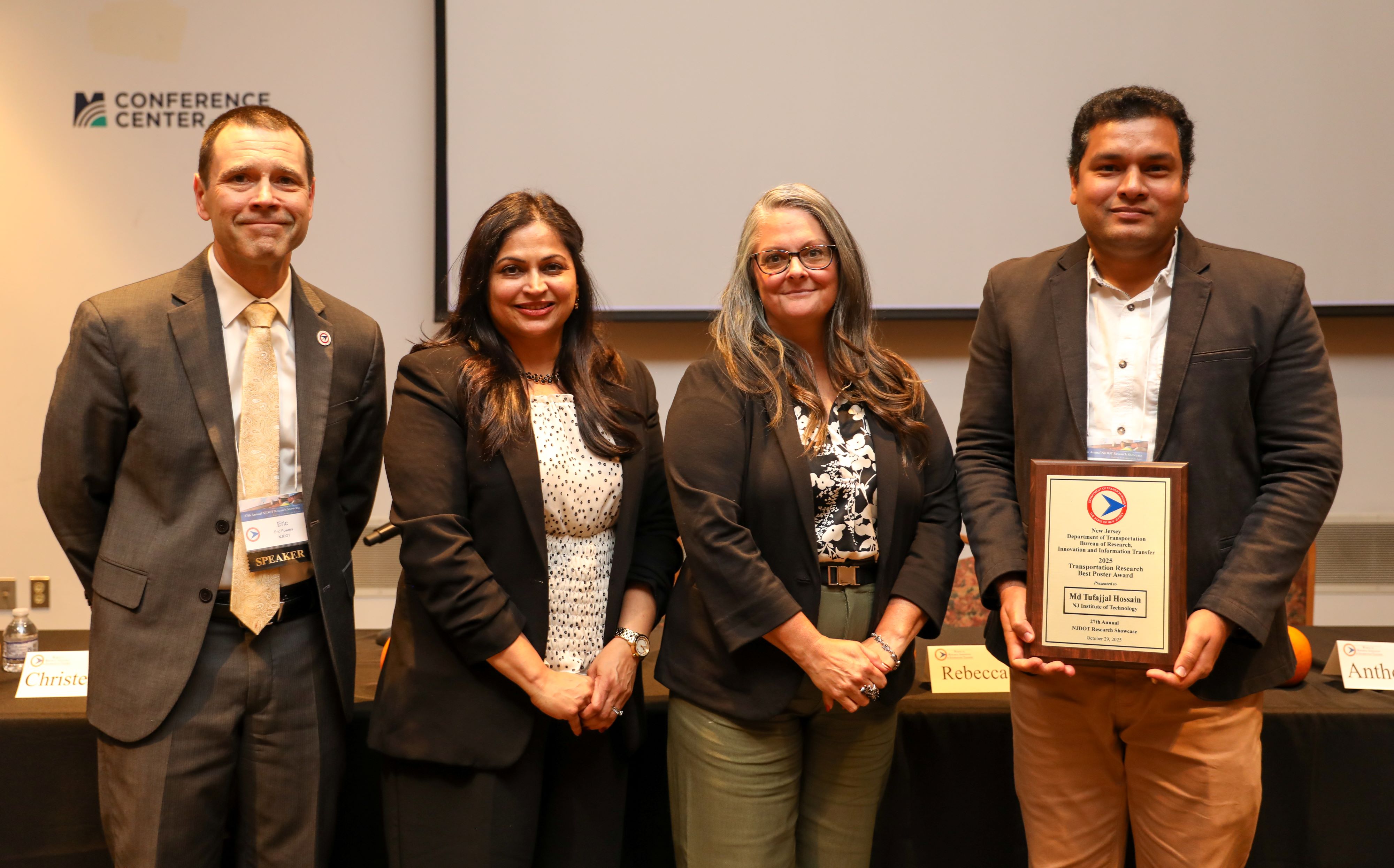
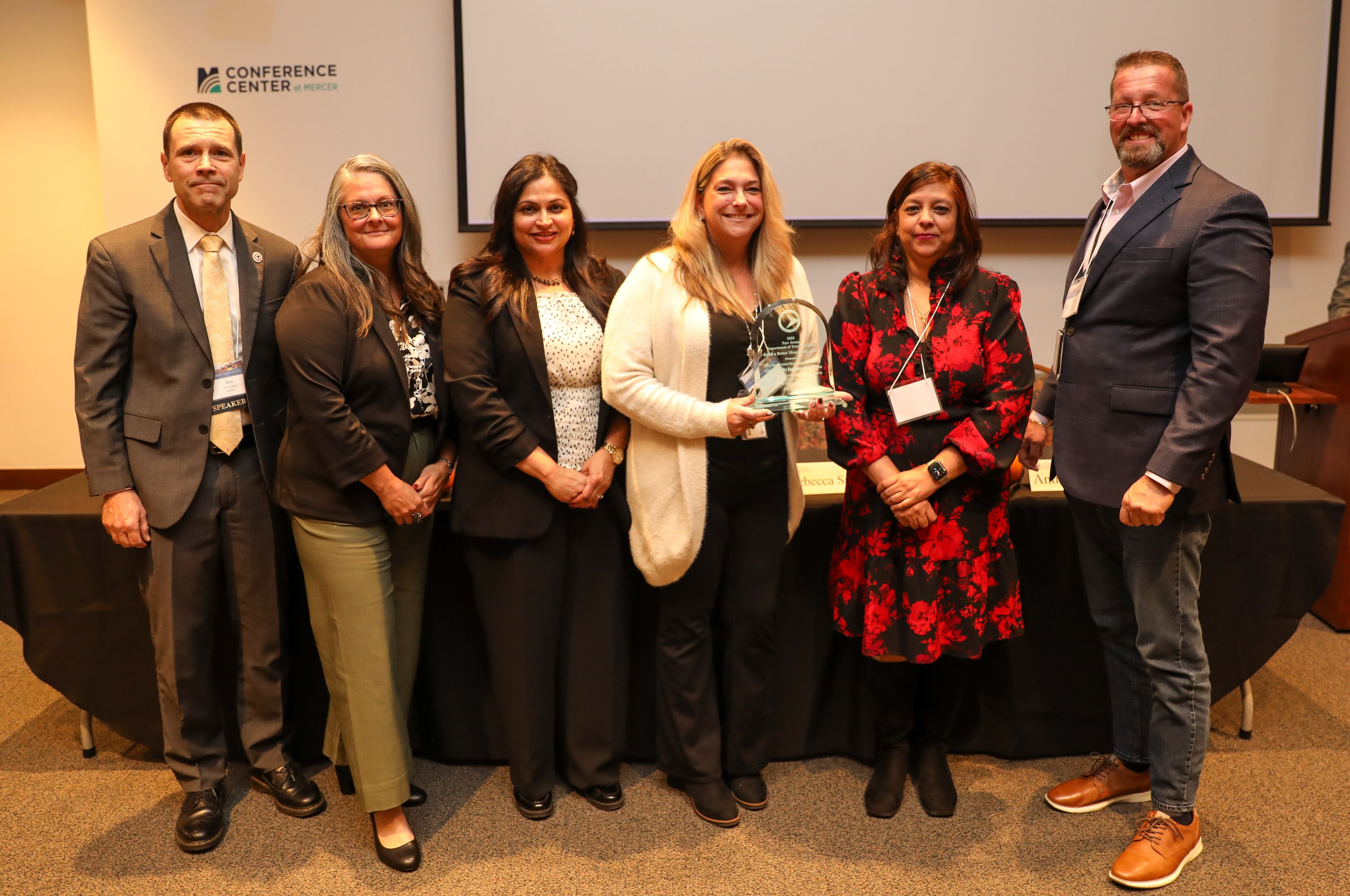

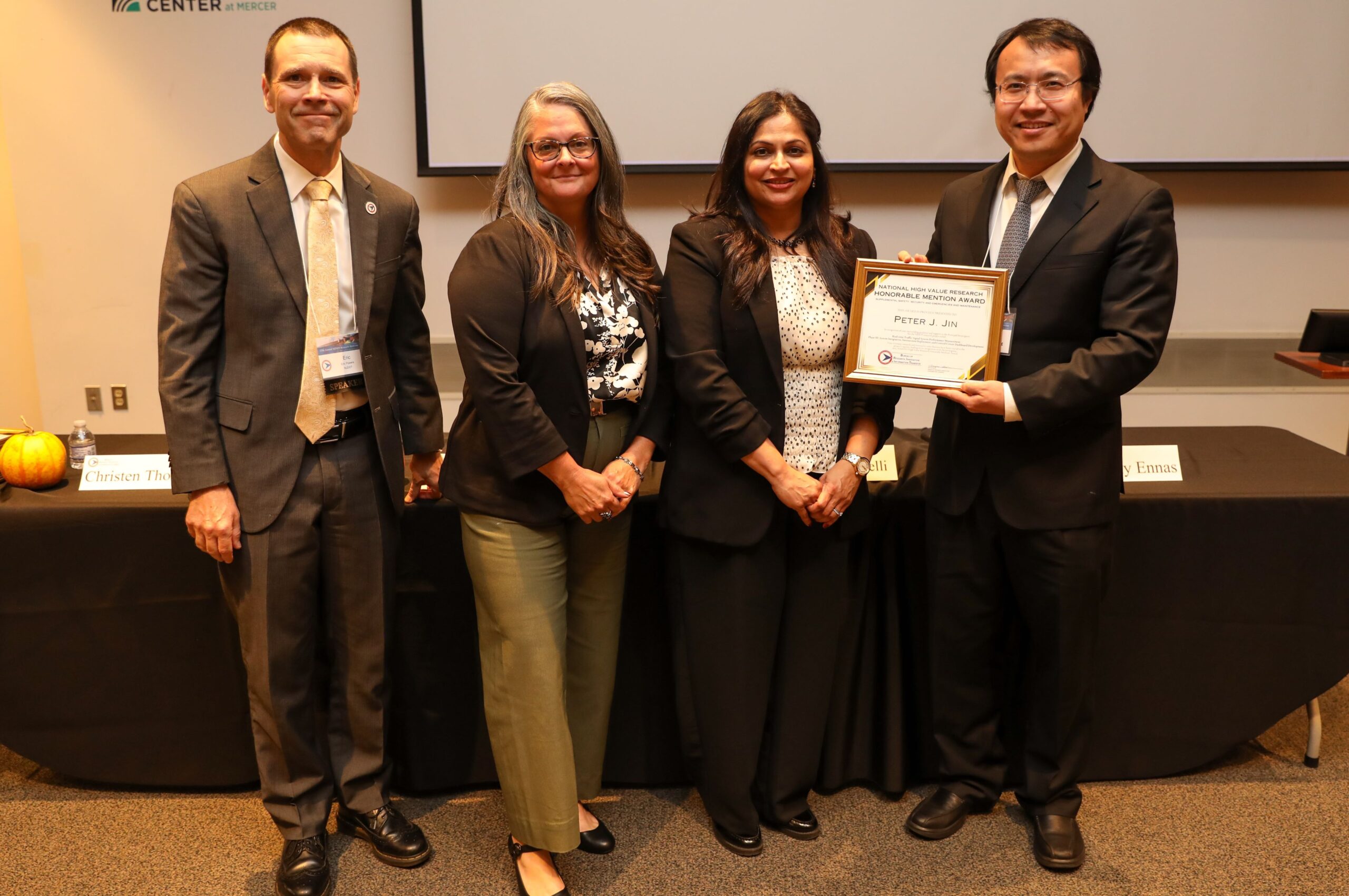
AFTERNOON
INFRASTRUCTURE
Evaluating Storage Stability and Performance Characteristics of Recycled Composite Plastic Modified Asphalt Binders
Evaluating Internally Cured High-Performance Concrete Life Cycle Cost Savings in New Jersey Bridges
Real-Time Monitoring of Far-Field Concrete Cracks Using Distributed Acoustic Sensing
Beyond the Clock: Sustainable Solutions for Returned Ready-Mix Concrete
SAFETY
New Jersey Micromobility Guide (2025)
Time-to-failure and Socioeconomic Data Analysis for Bridge Assessment and Funding Allocation
A Multi-State Auxetic Metamaterial with Enhanced Stability and Energy Absorption for Transportation Protection
Harsh Braking as a Surrogate for Crash Risk: A Segment-Level Analysis with Connected Vehicle Telematics
WORKFORCE DEVELOPMENT & KNOWLEDGE MANAGEMENT
Mapping the Future: GIS and GPS Applications for Modern Engineering and Surveying
Introducing Transportation Careers to Youth in New Jersey
GPI’s Workforce Development Challenges and Solutions
Multi-Agent Large Language Model Framework for Code-Compliant Infrastructural Design
POSTERS
(click images for PDF)
